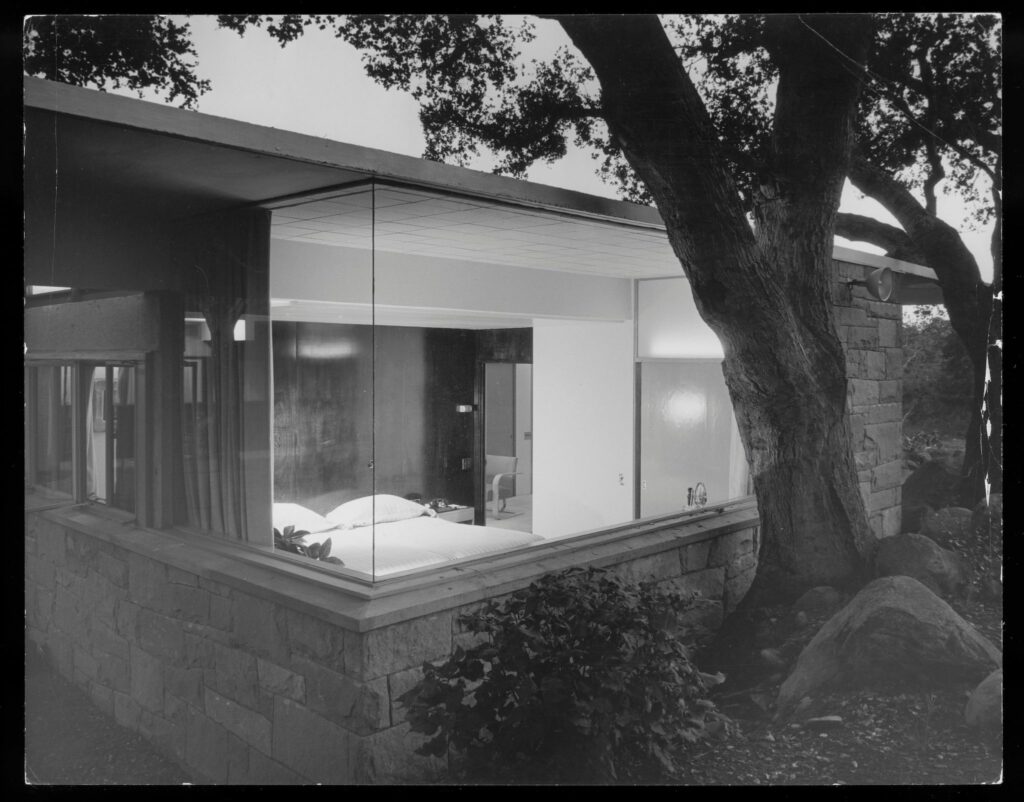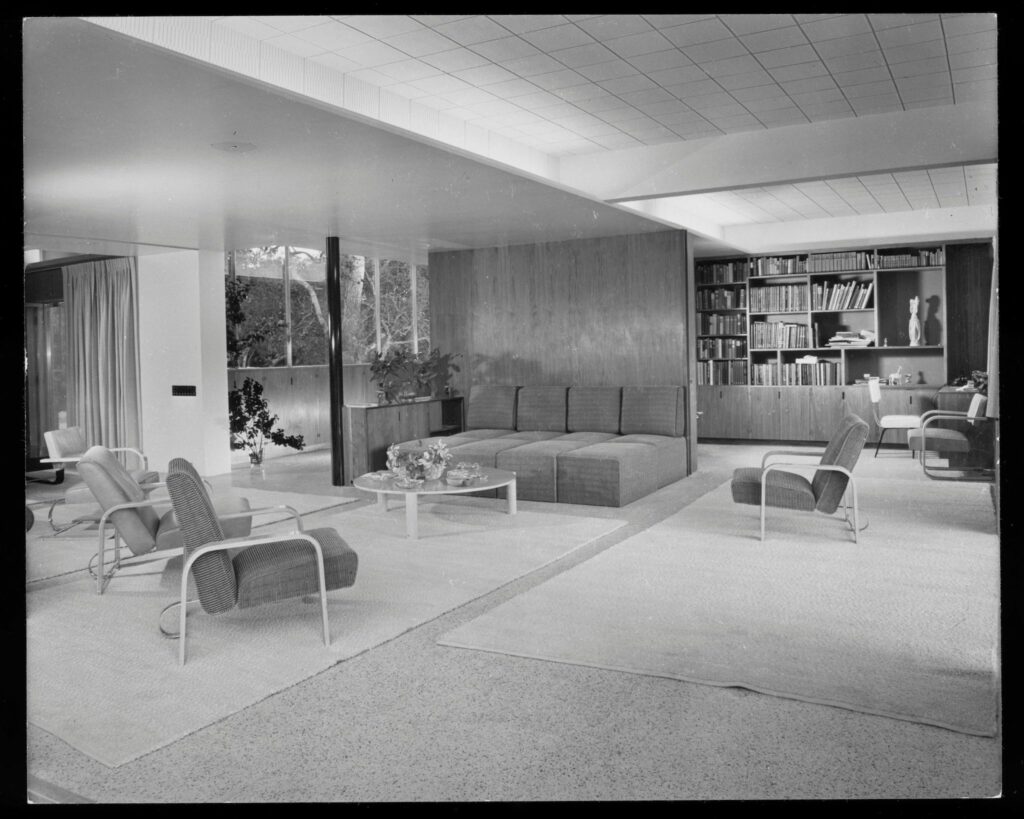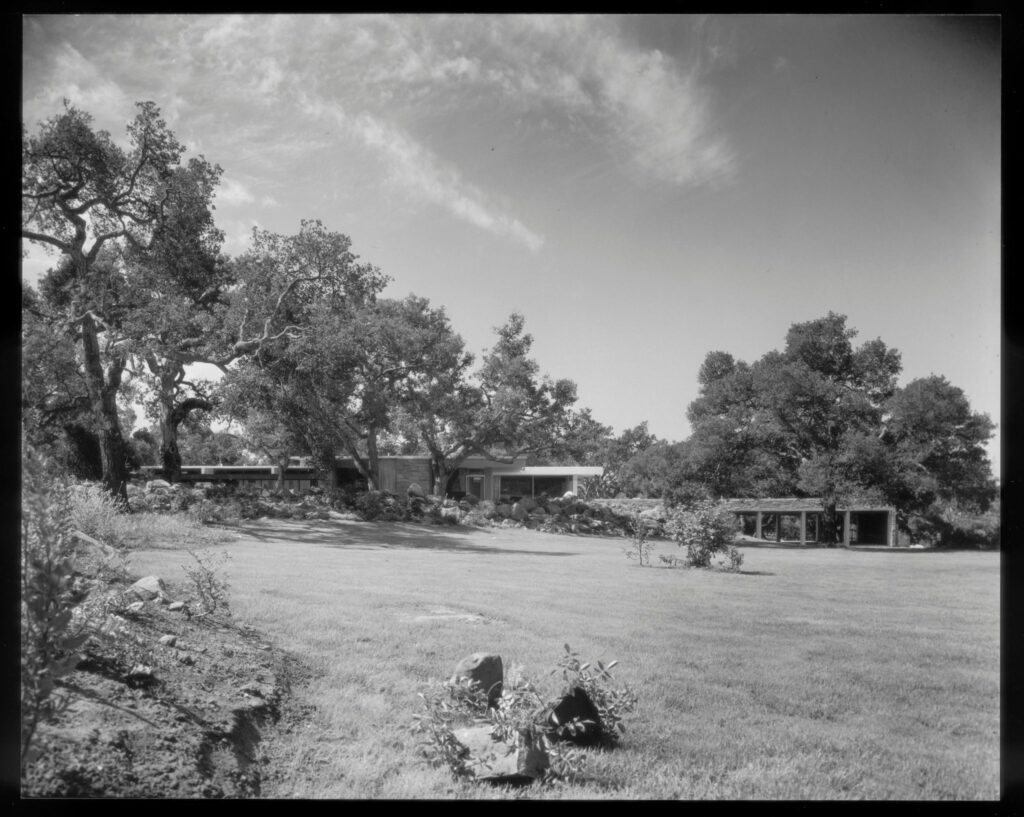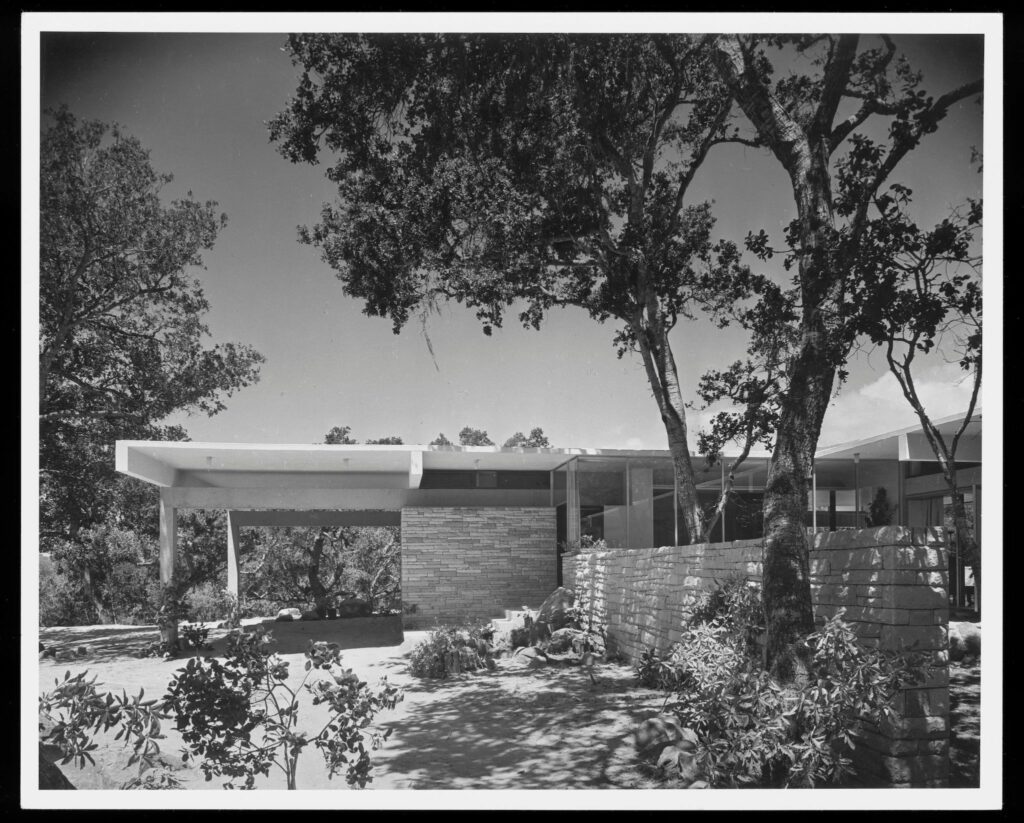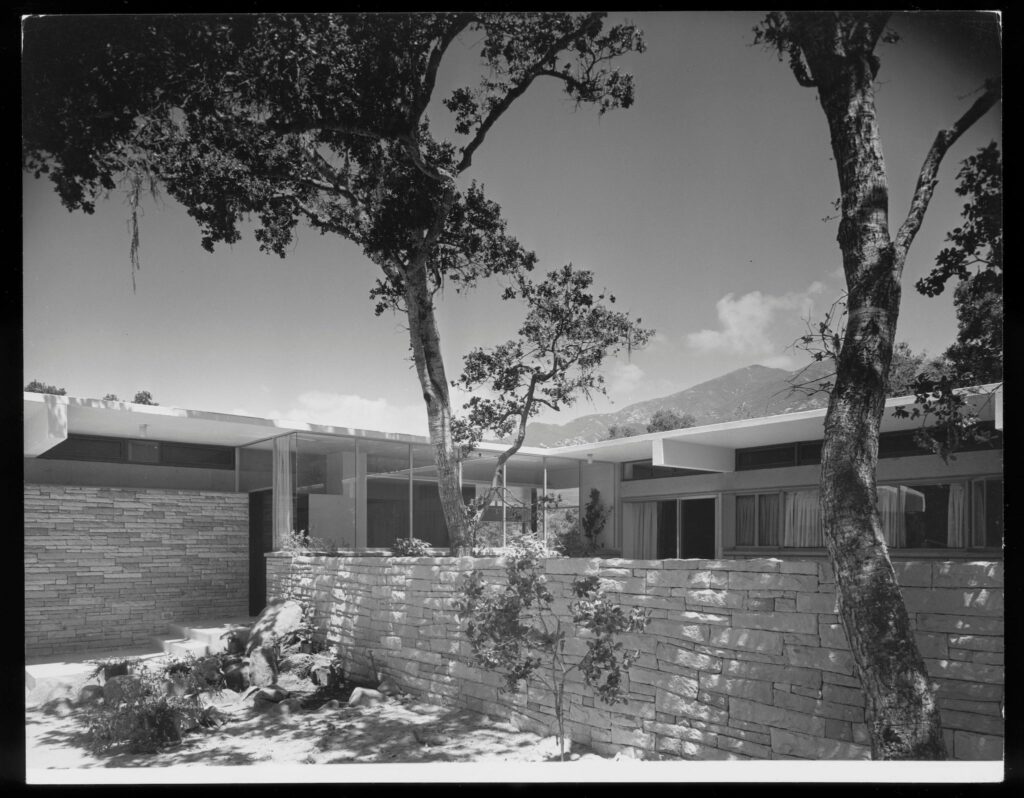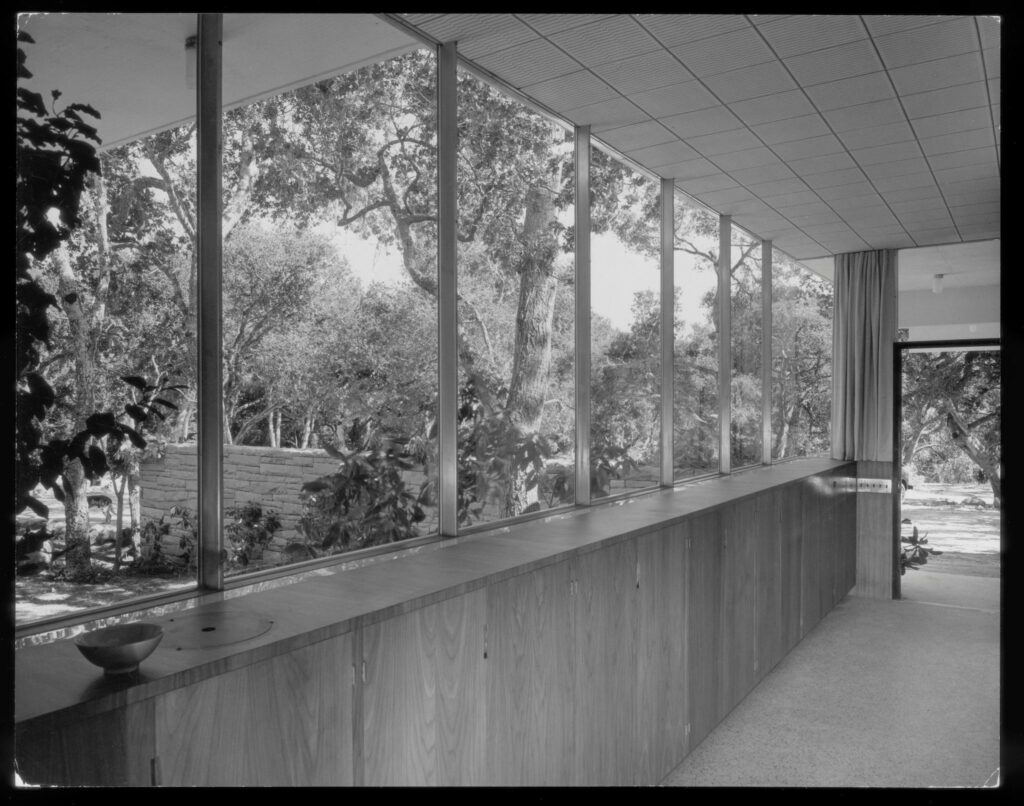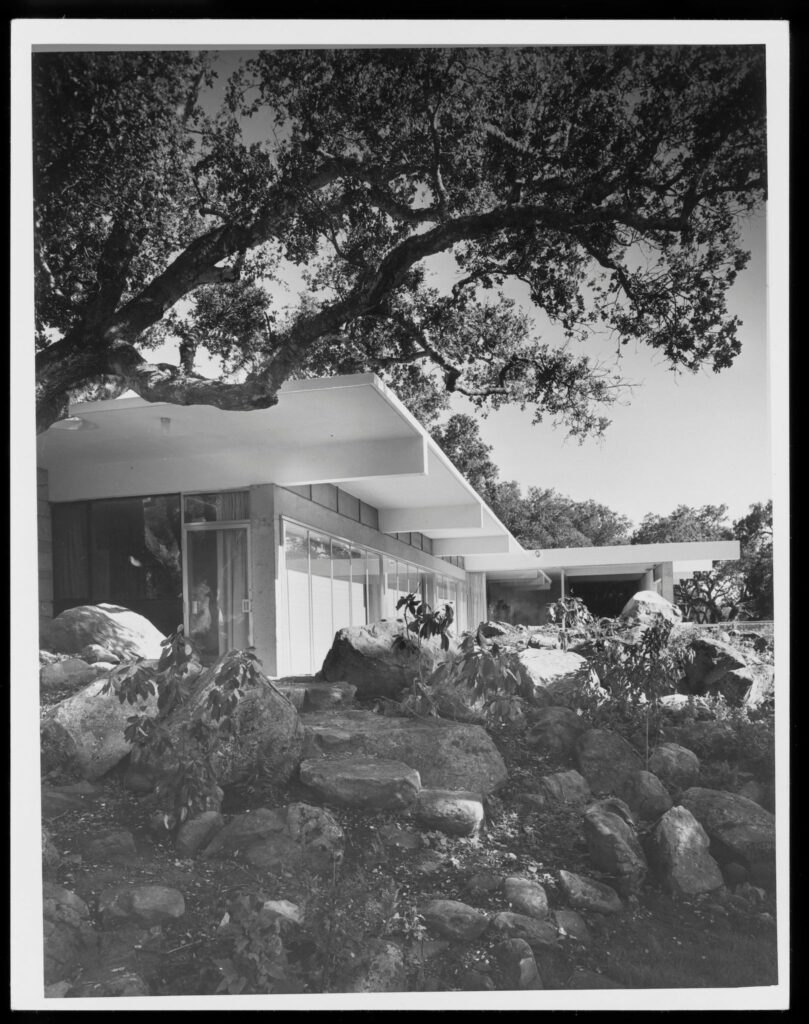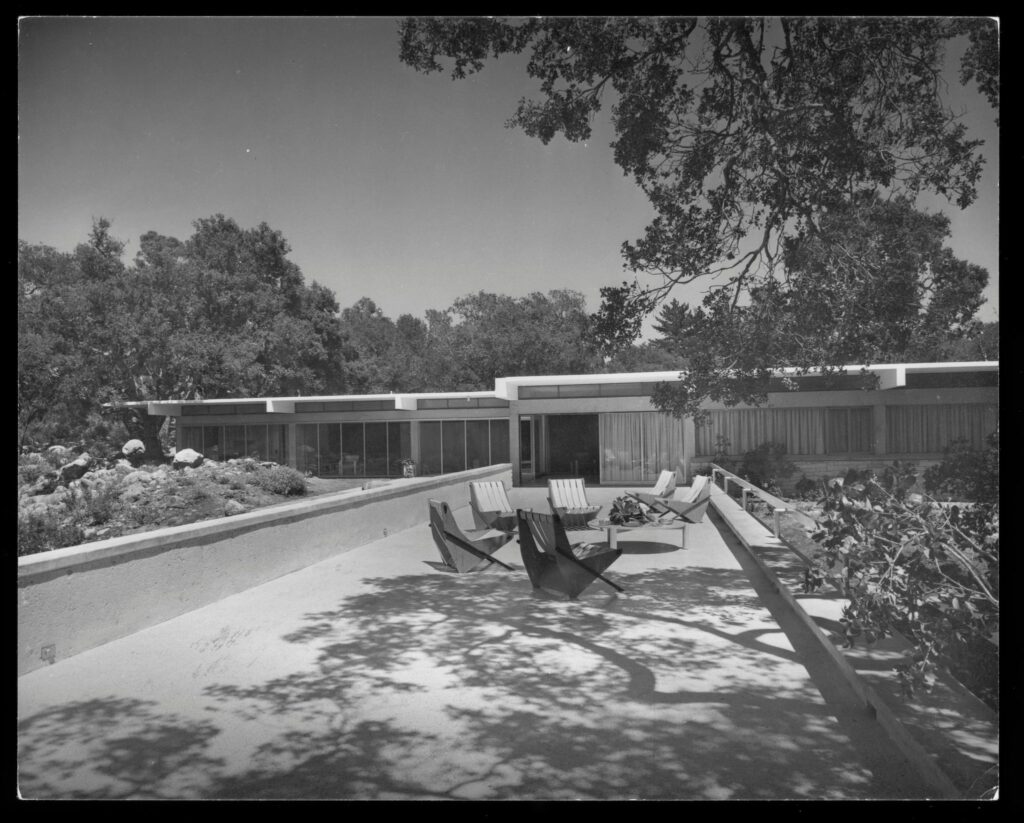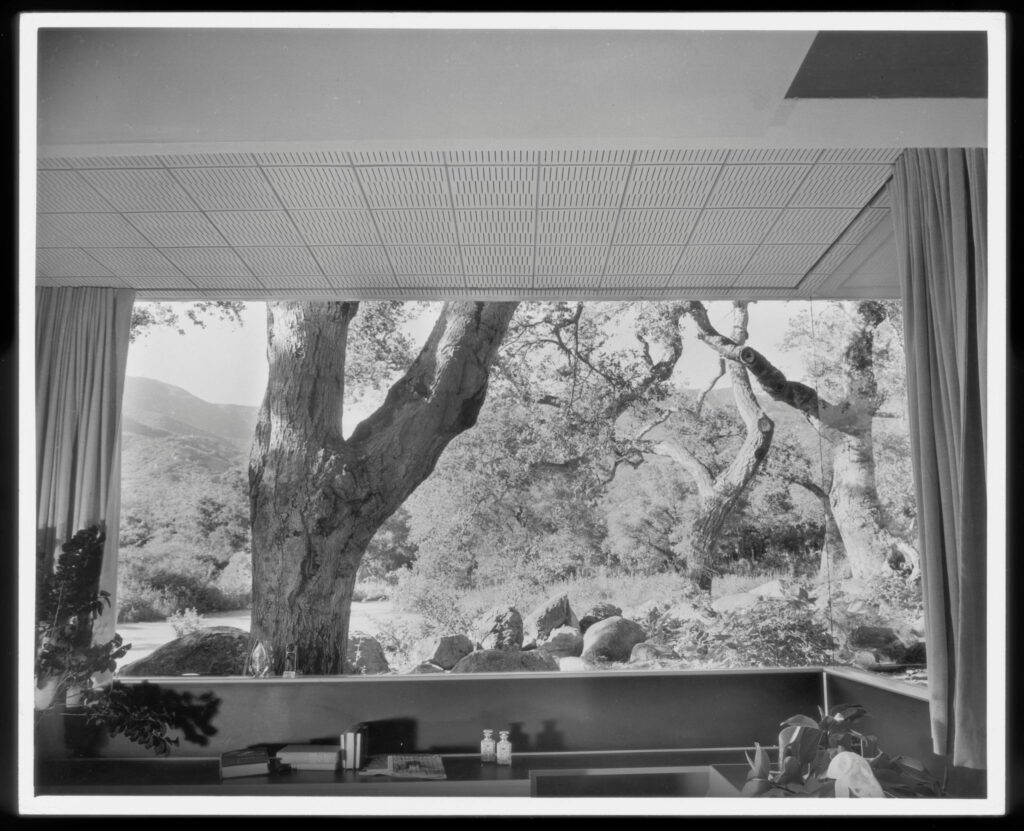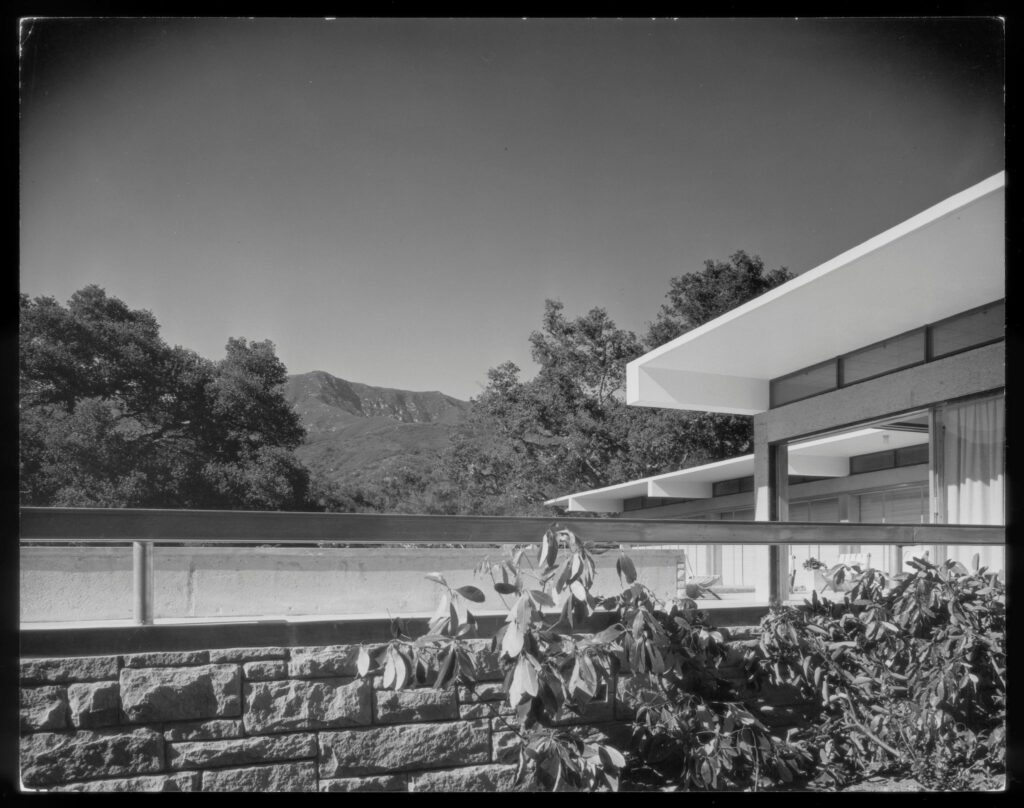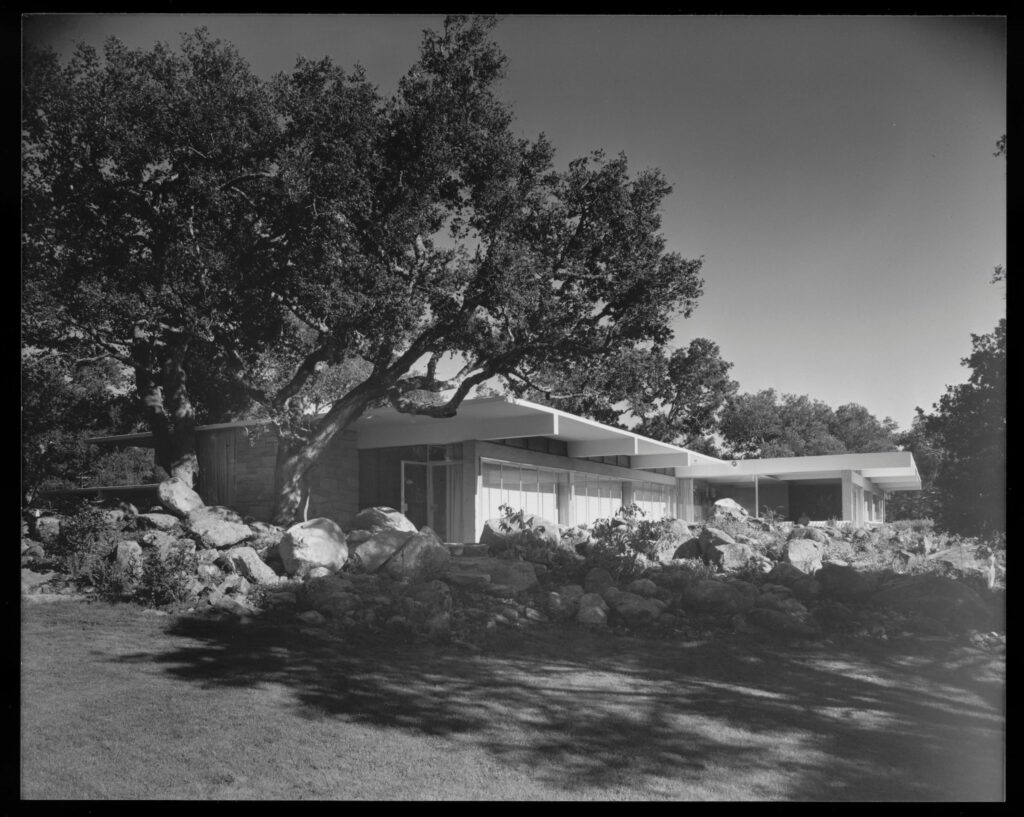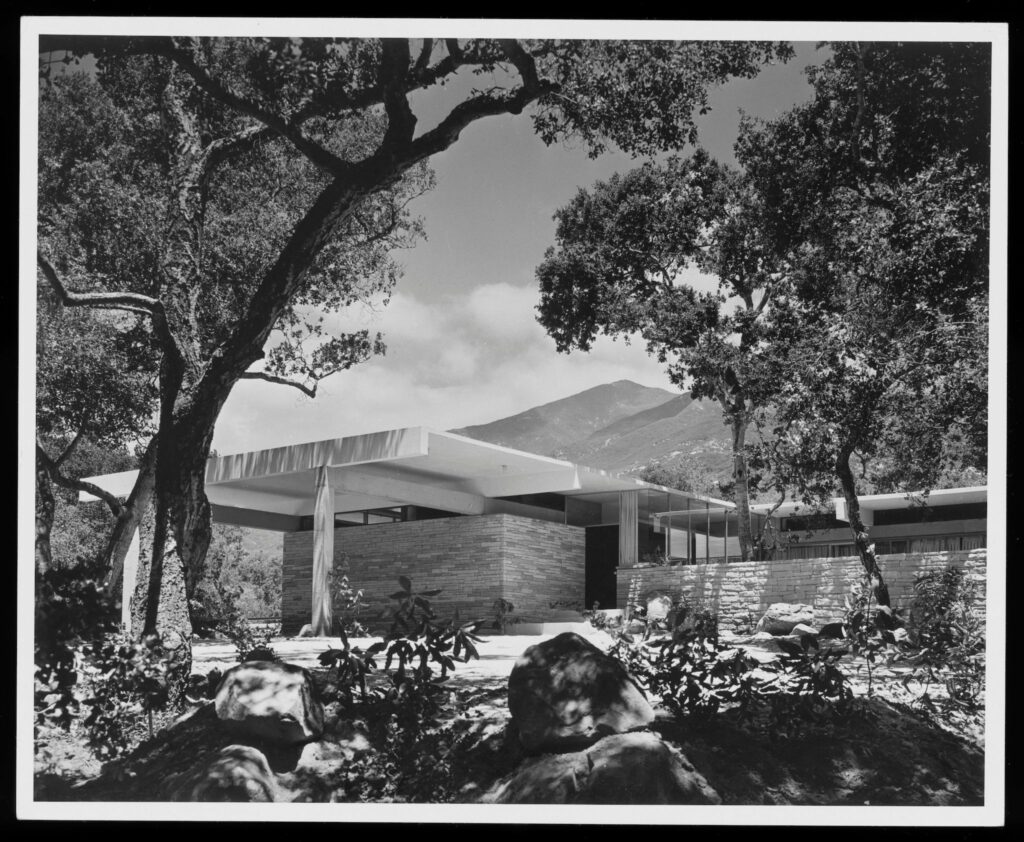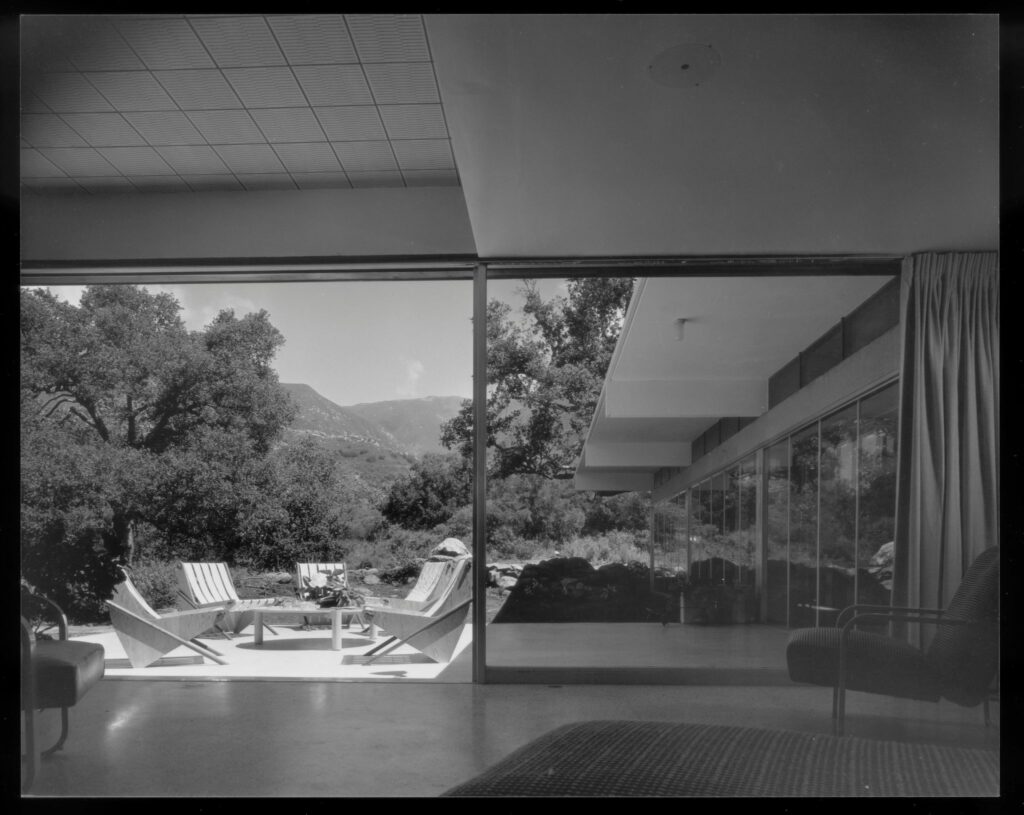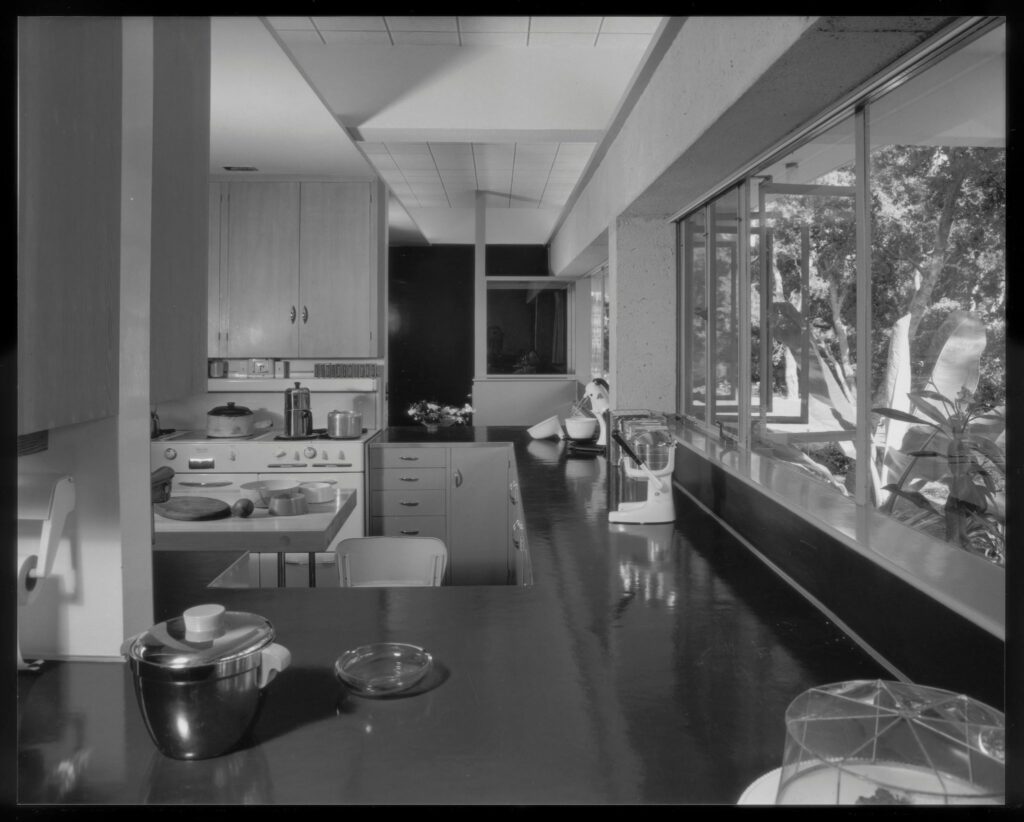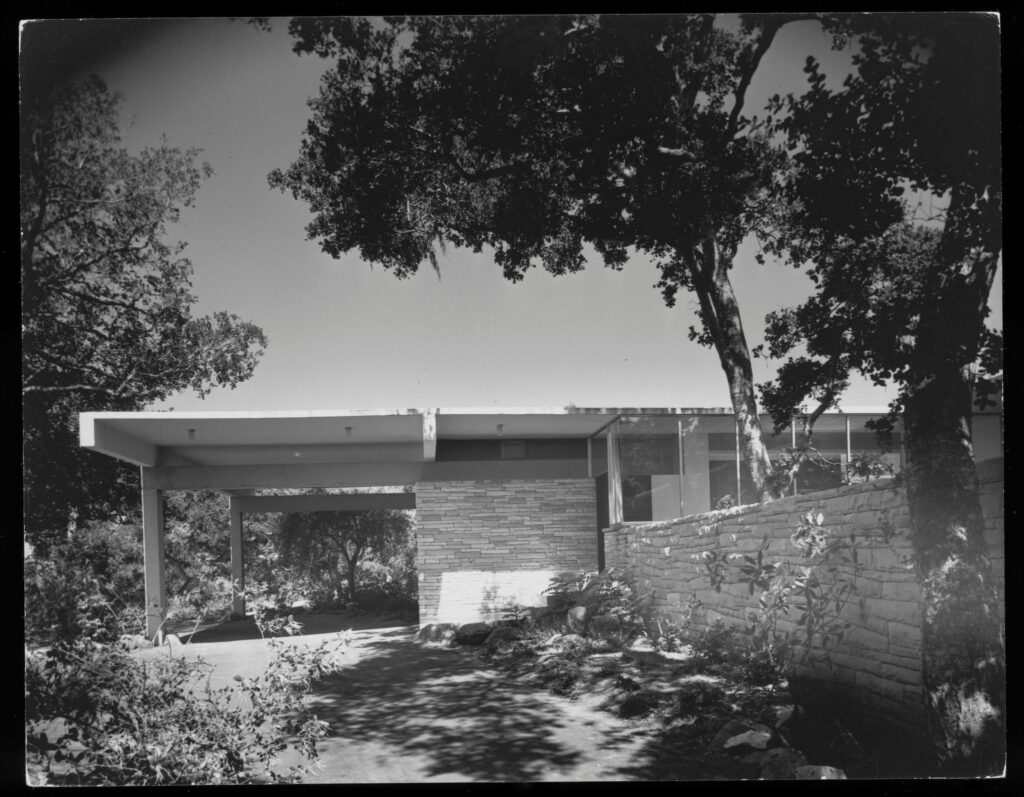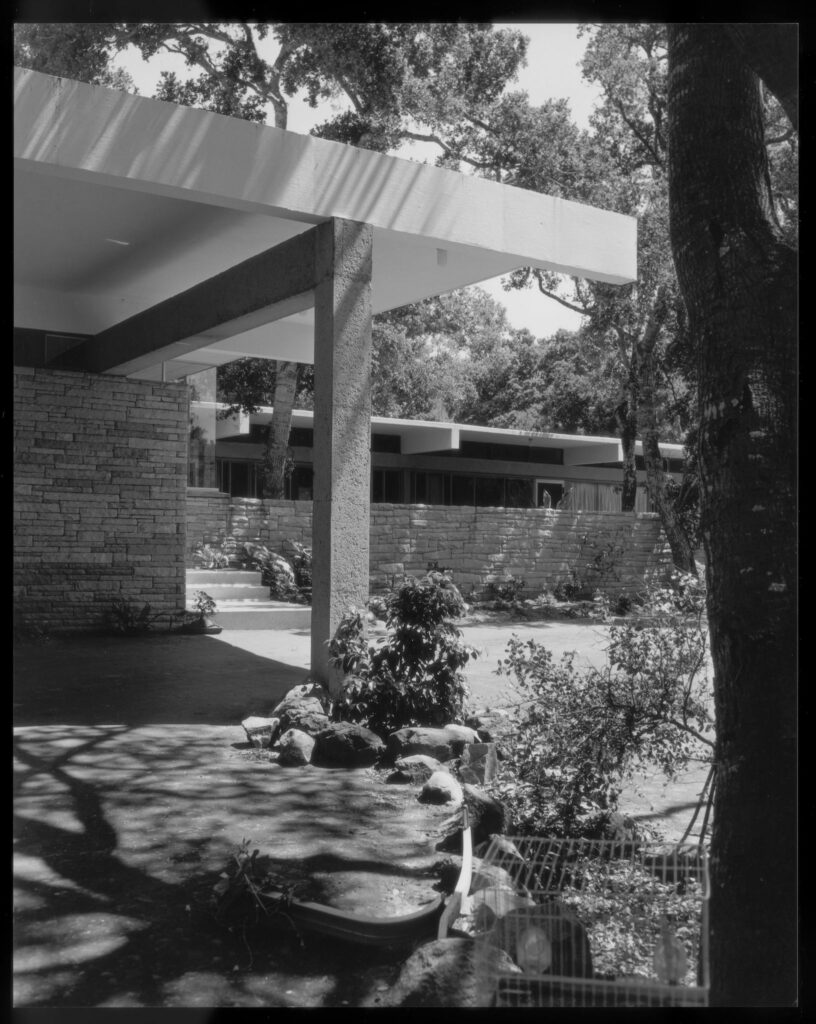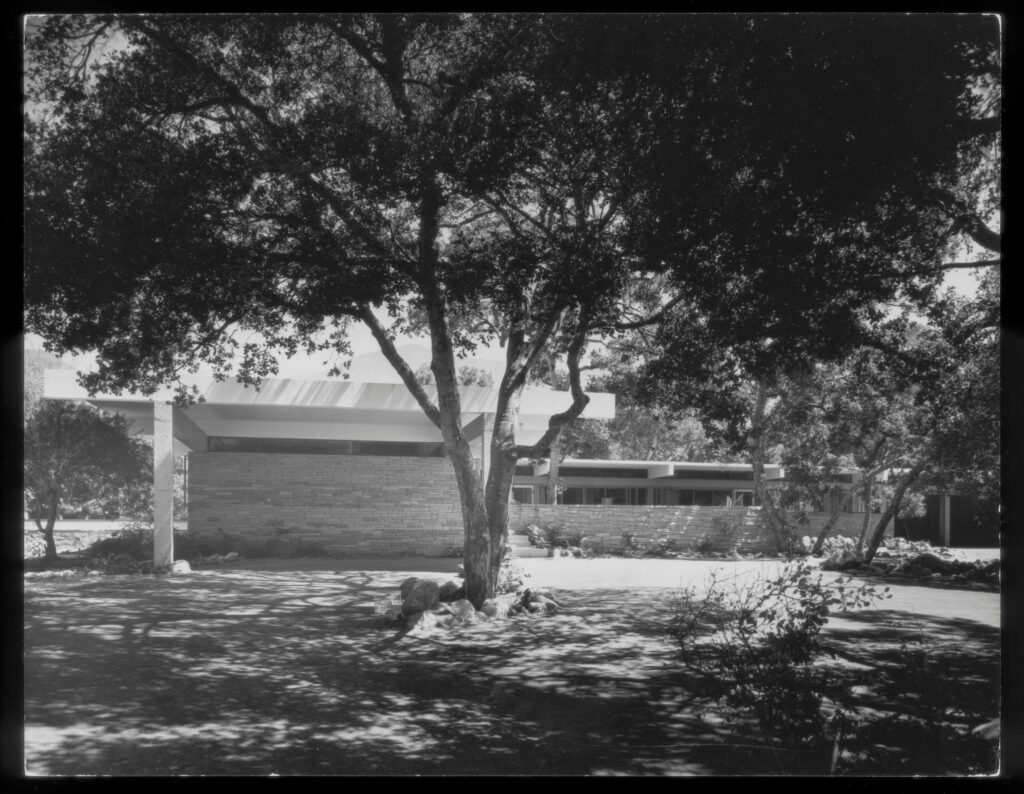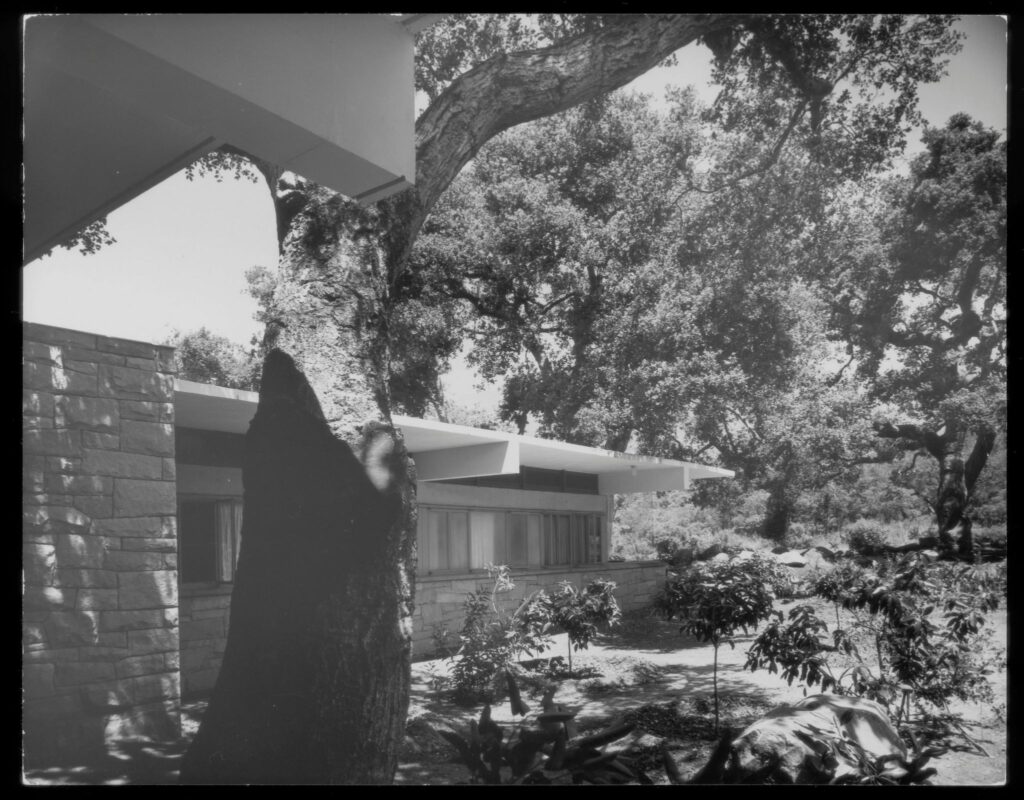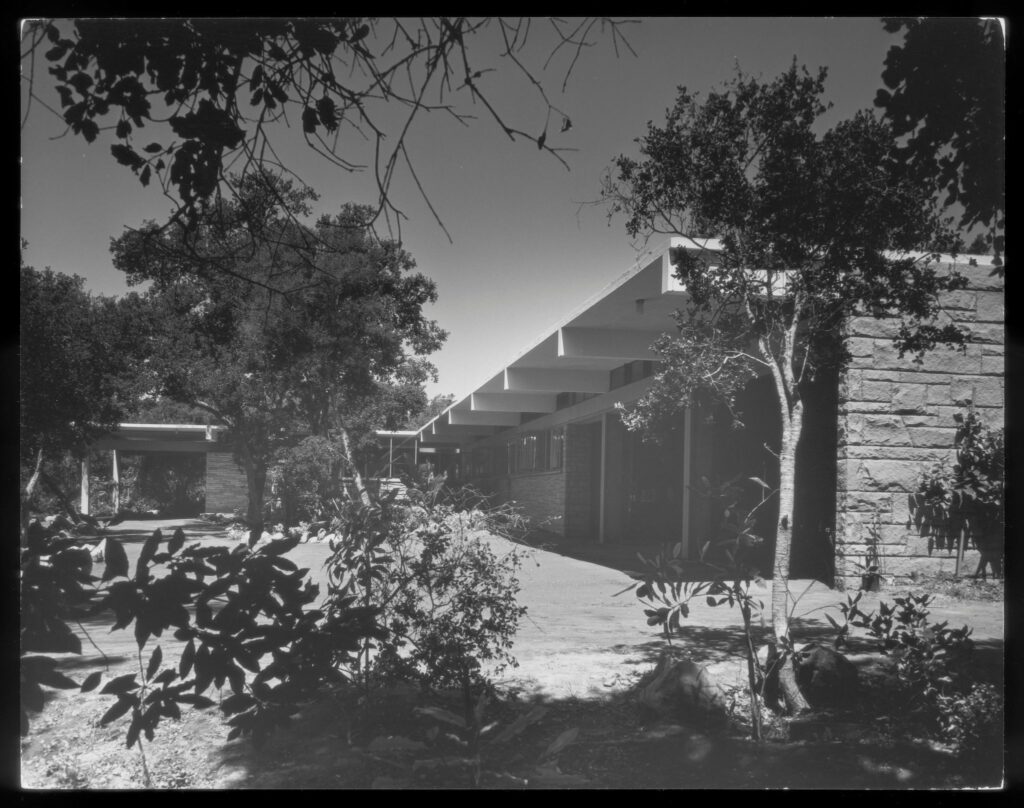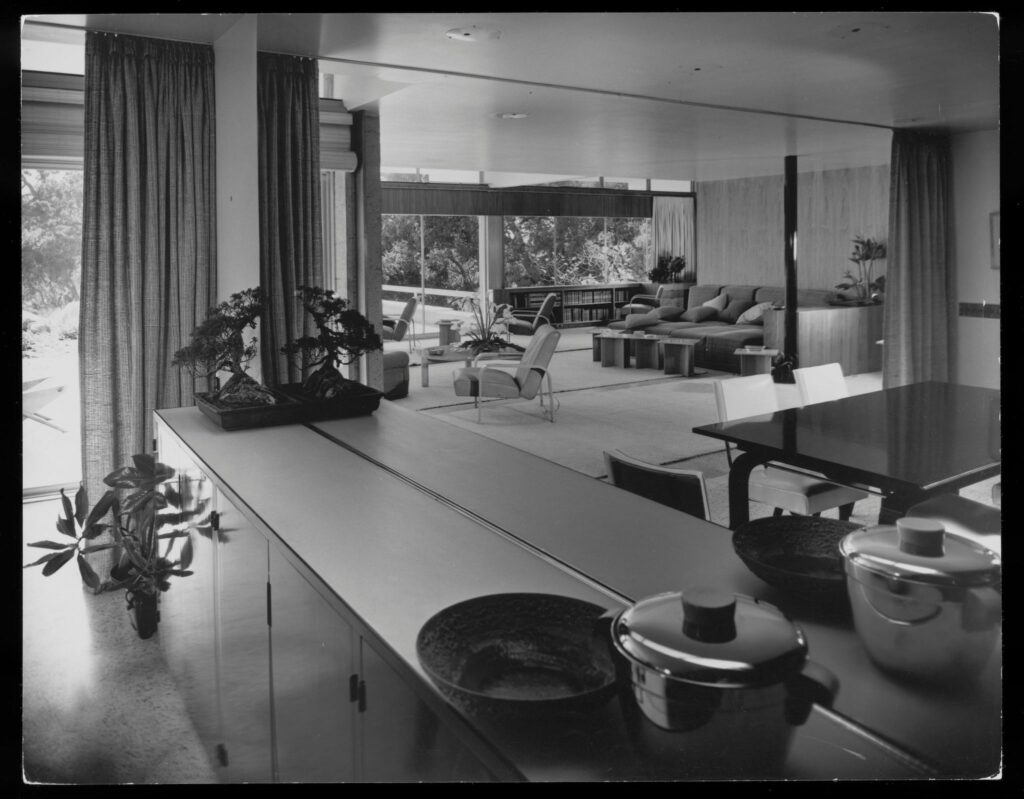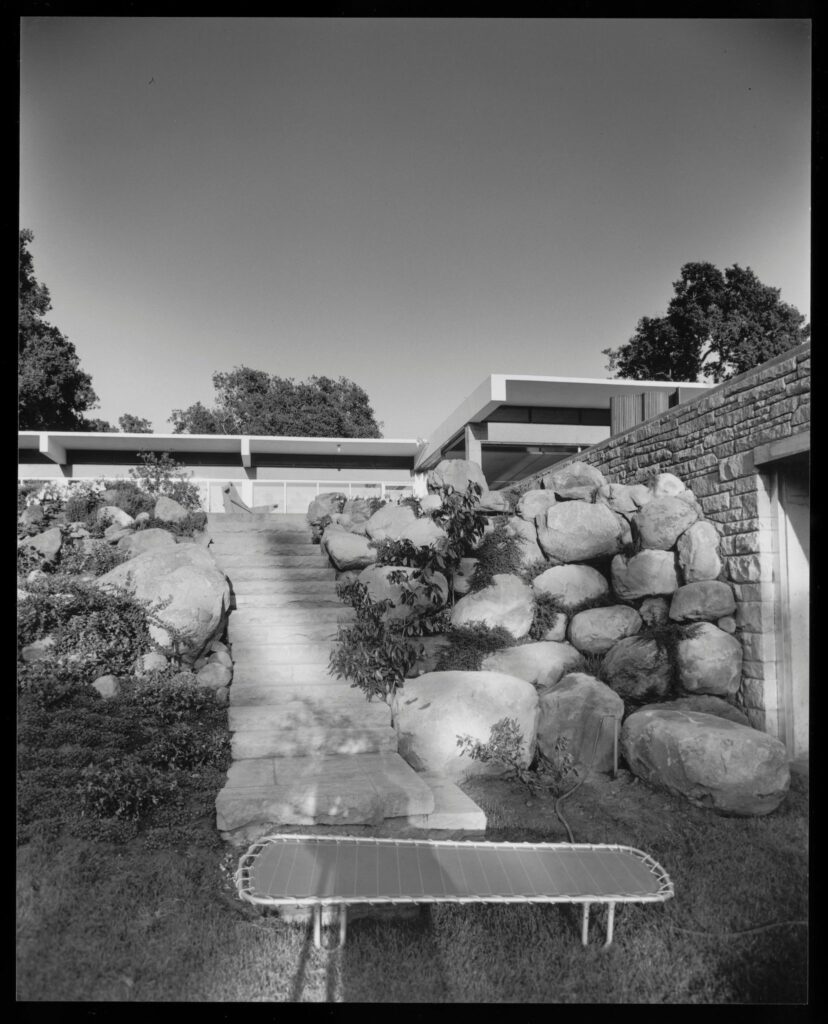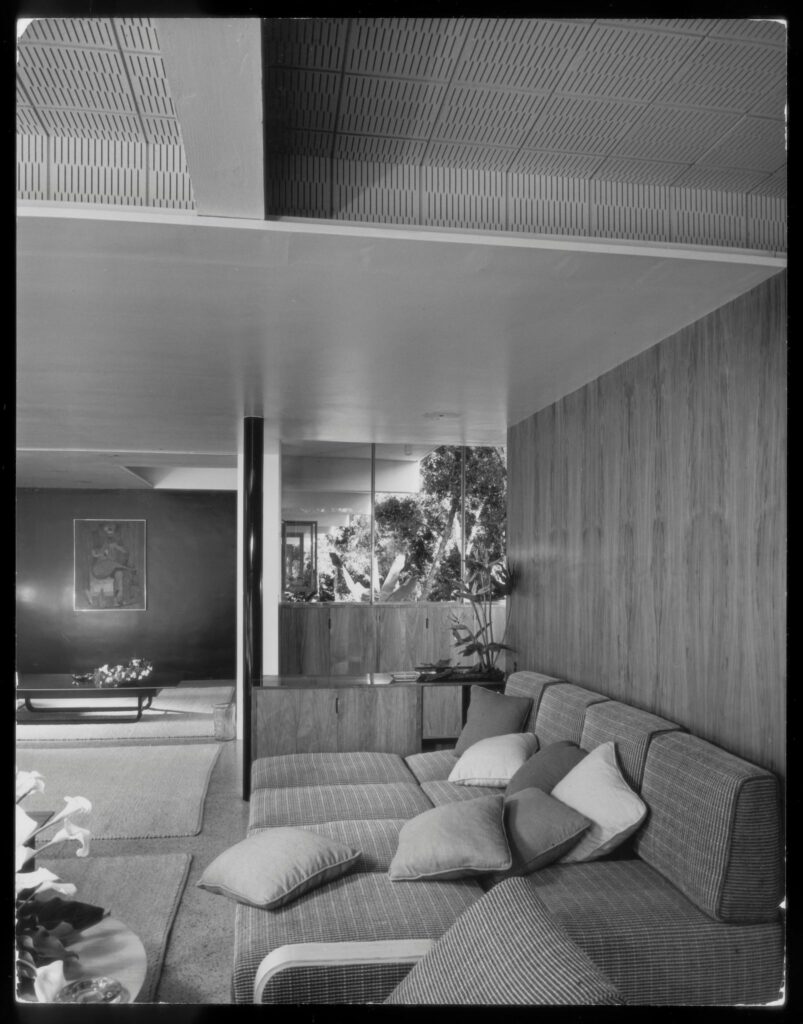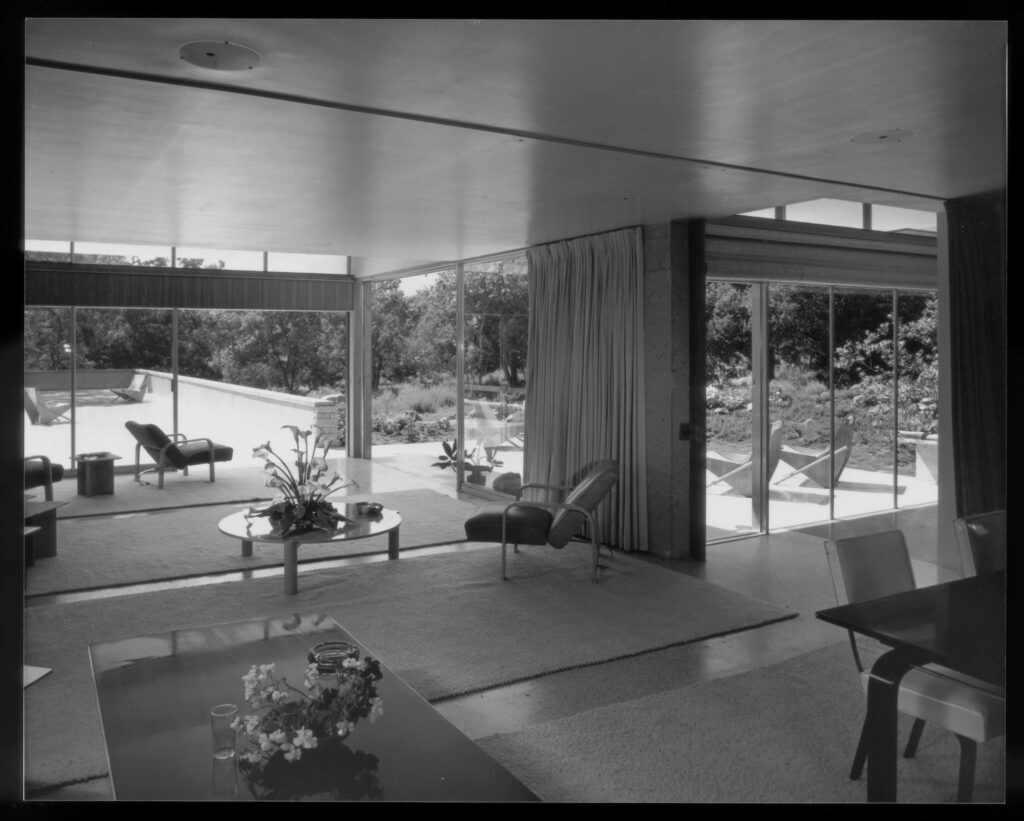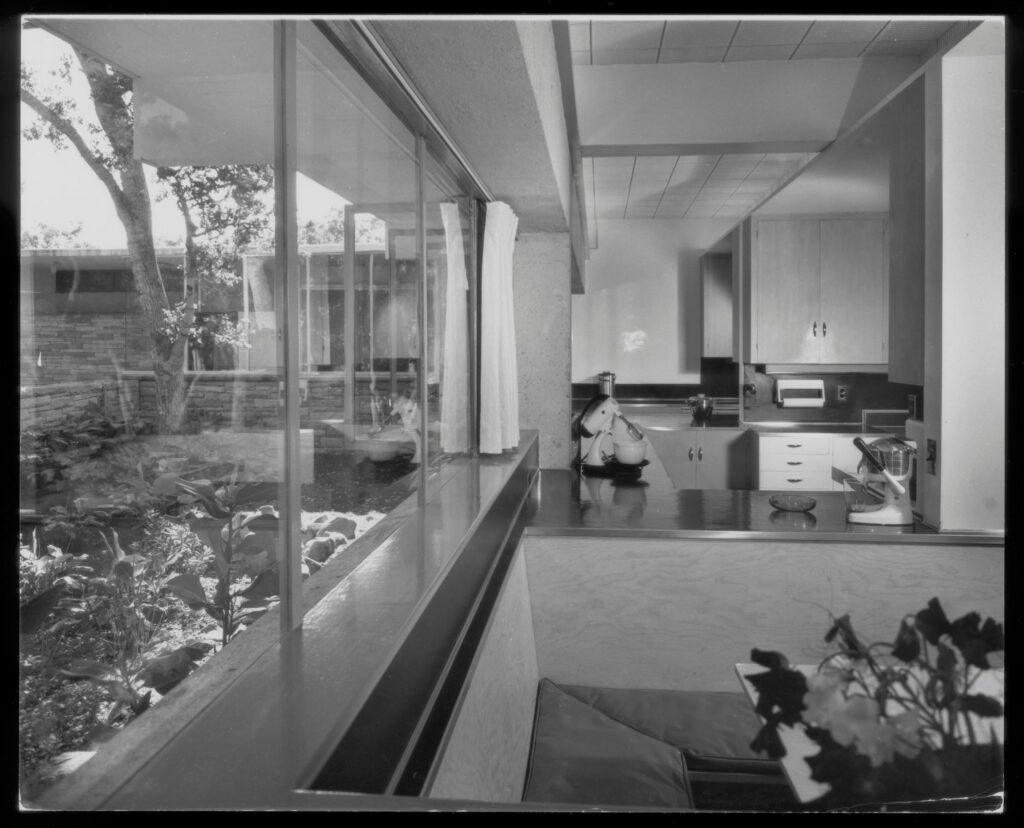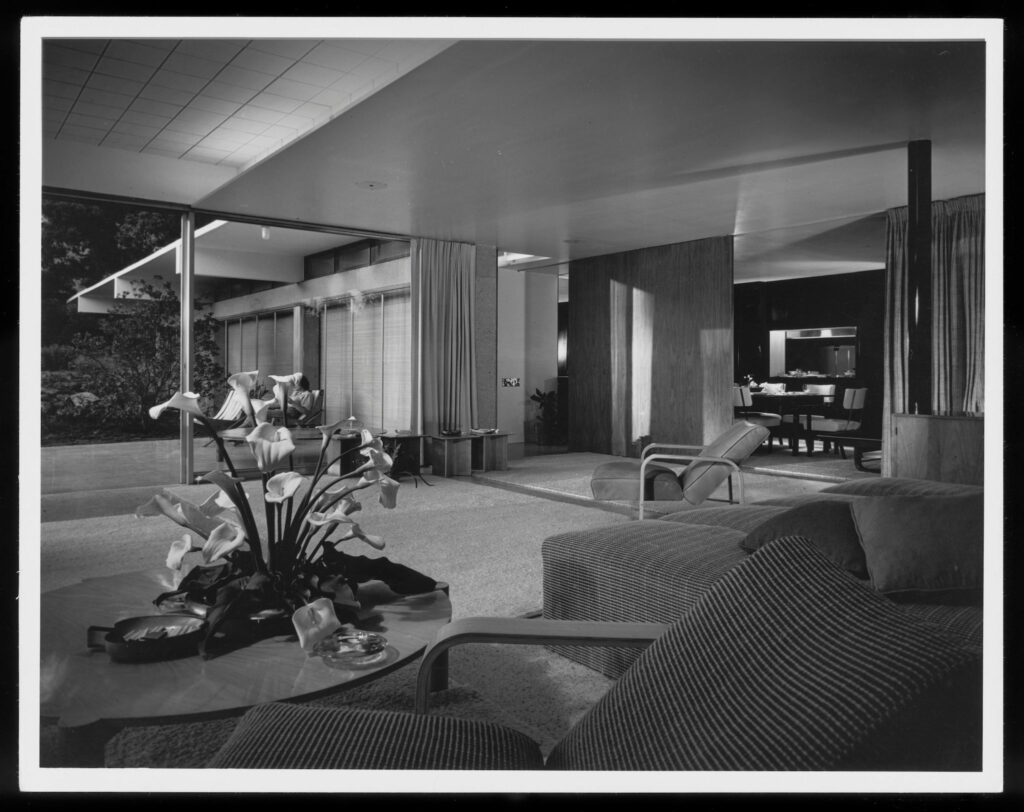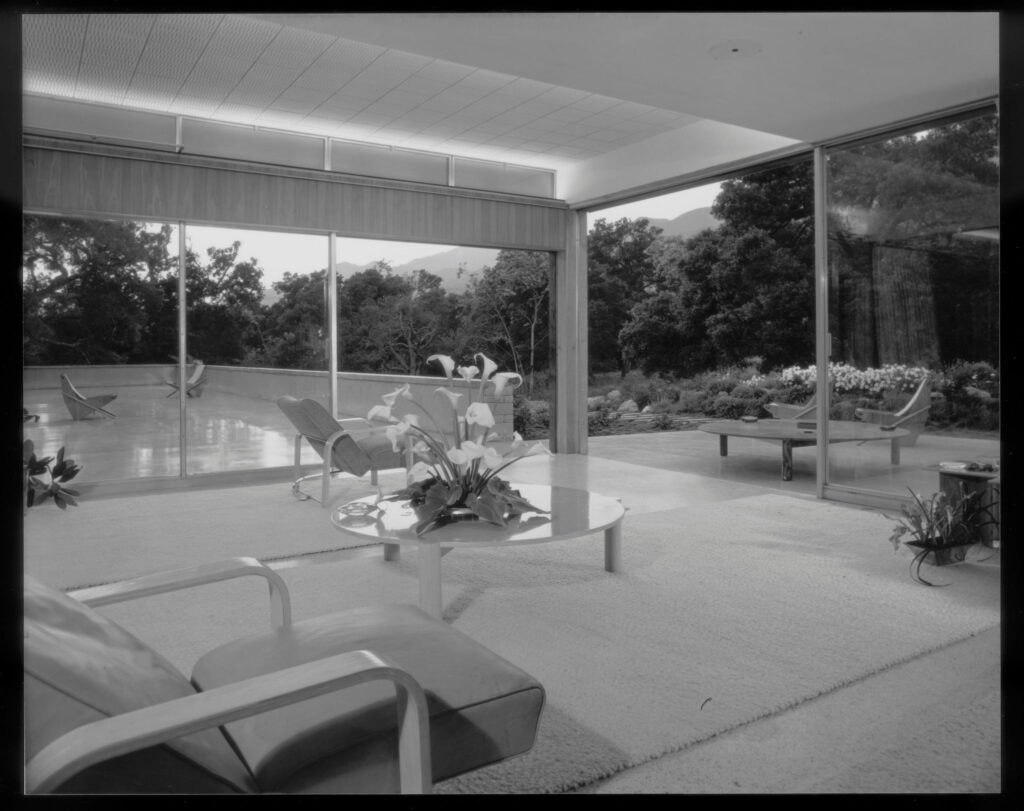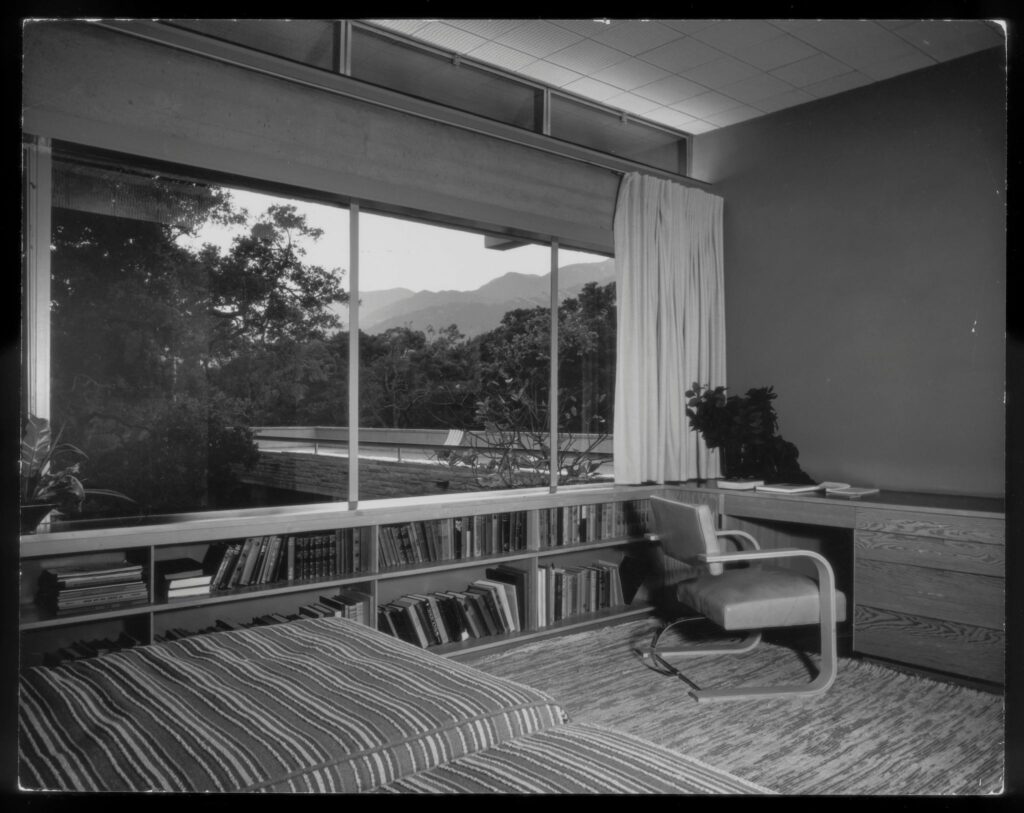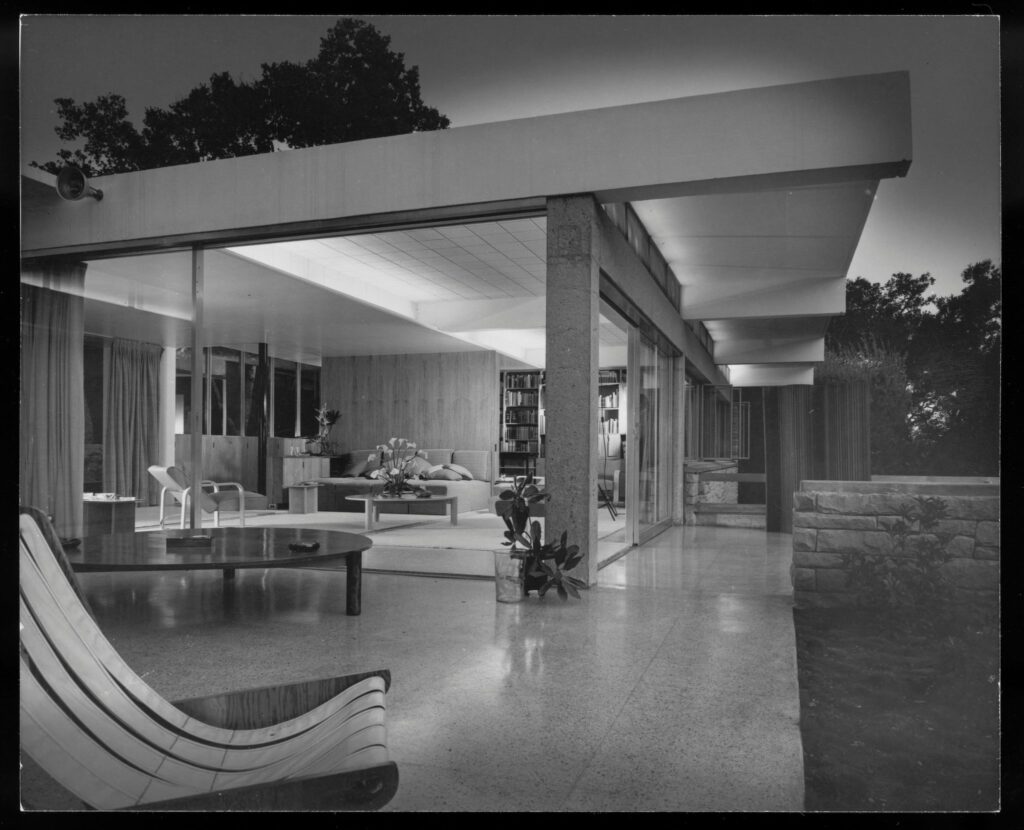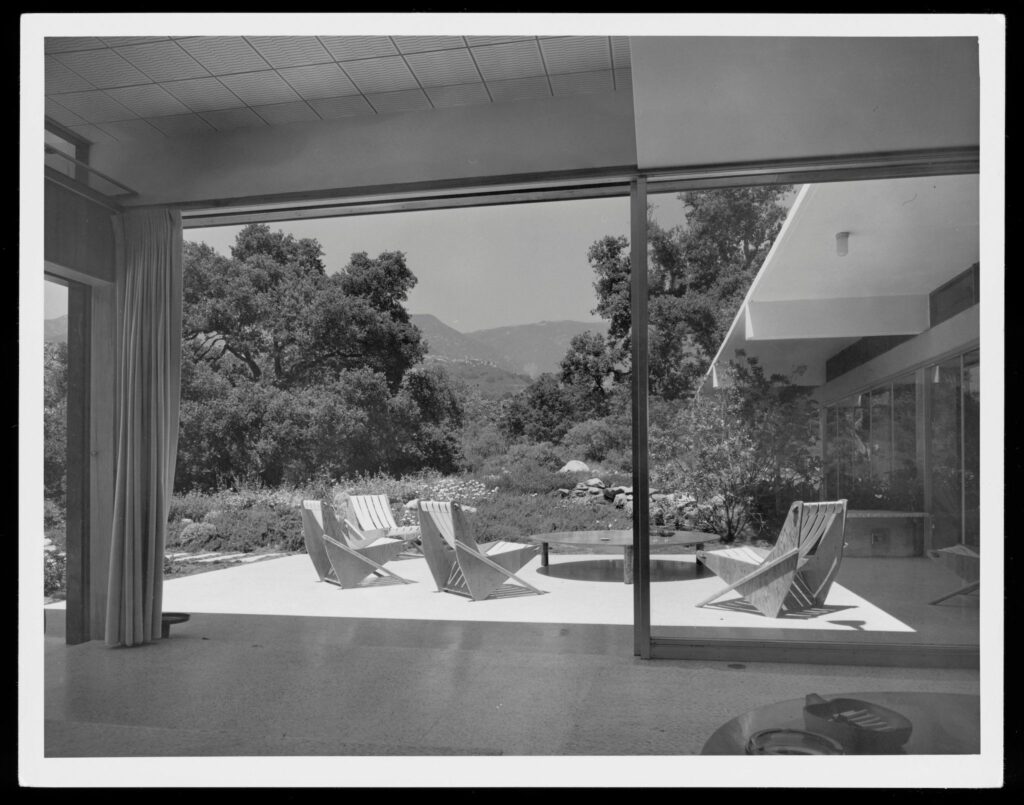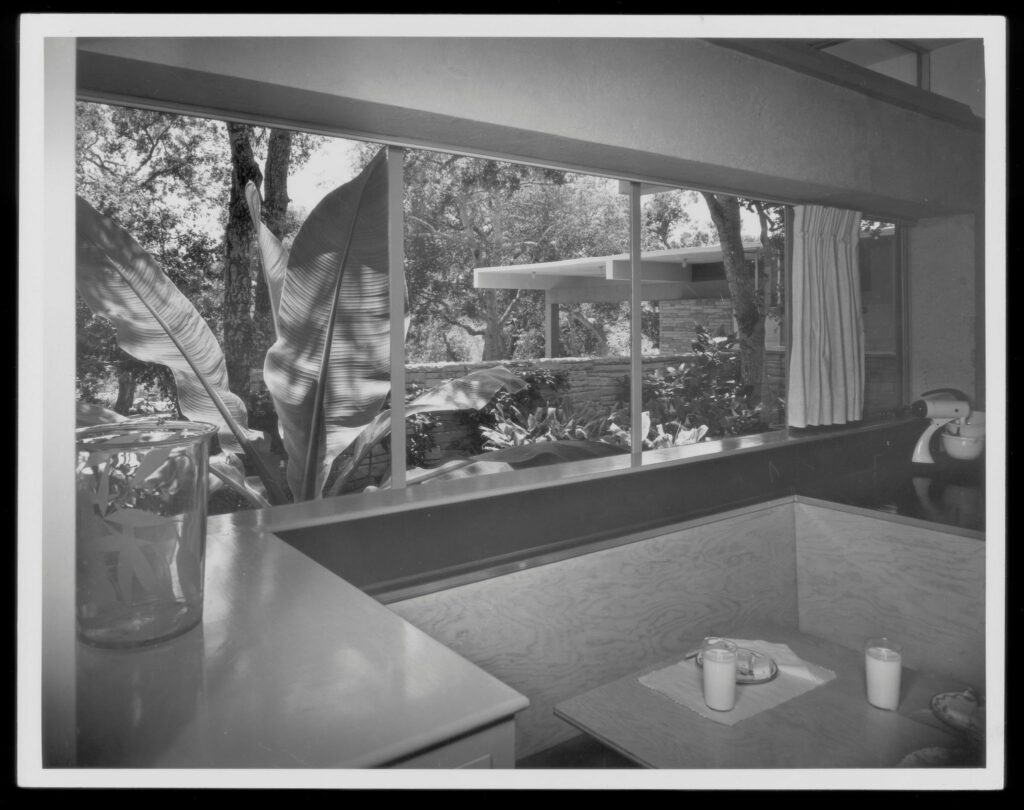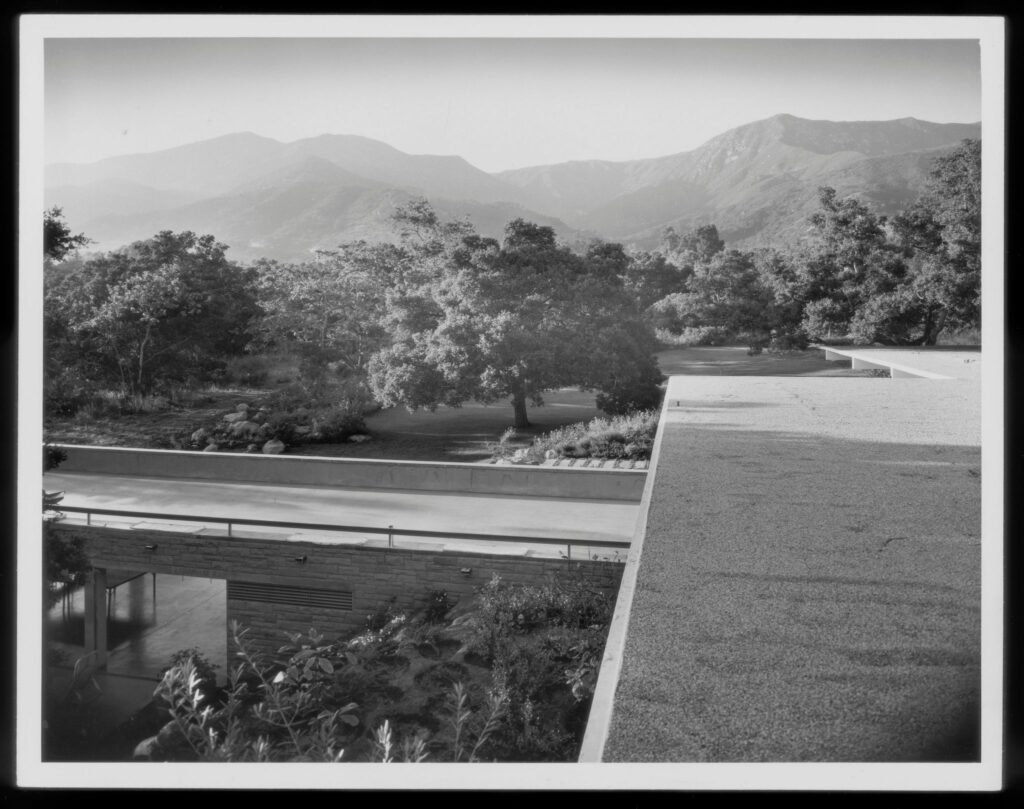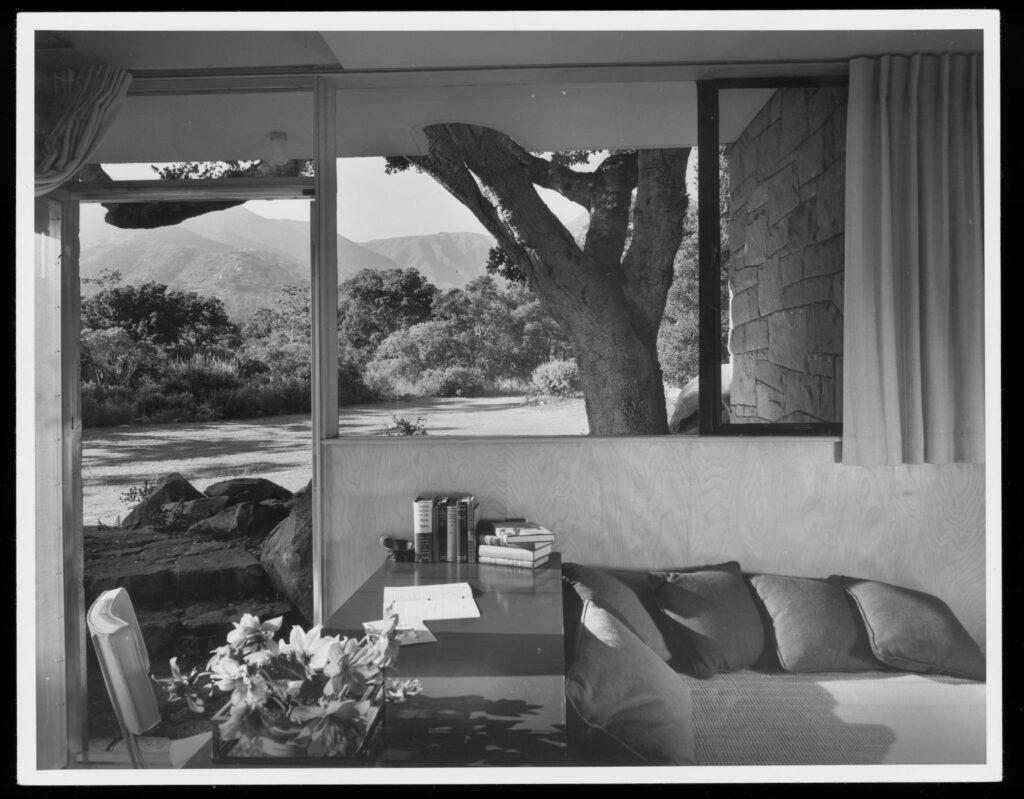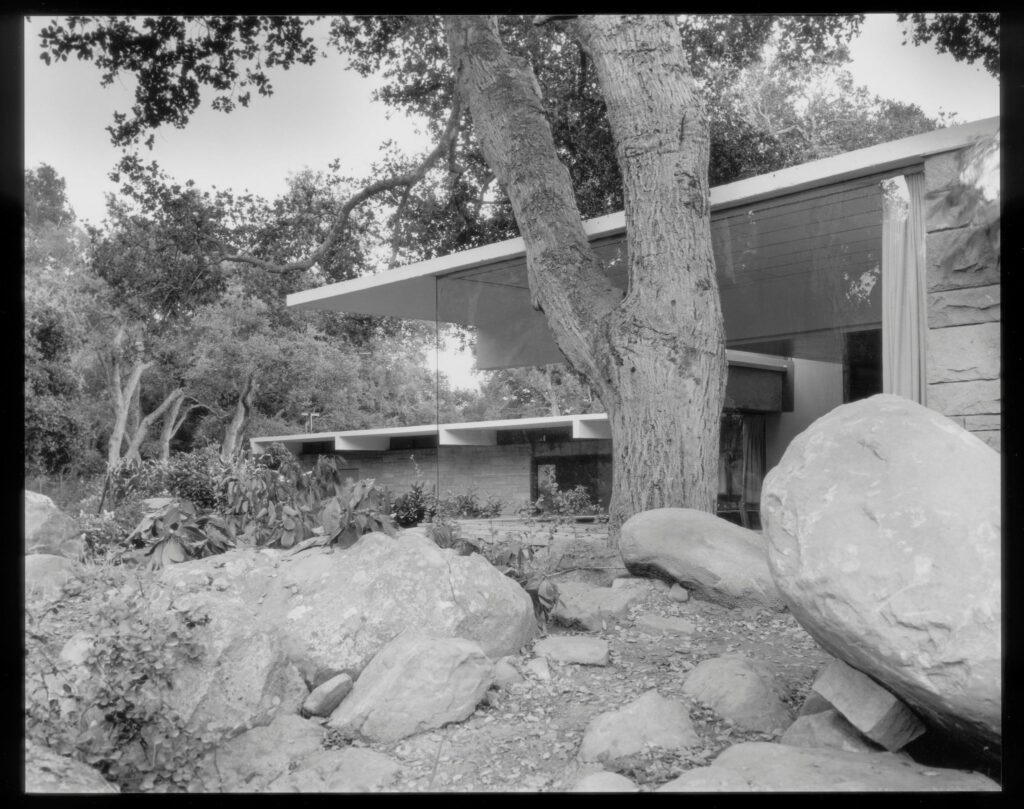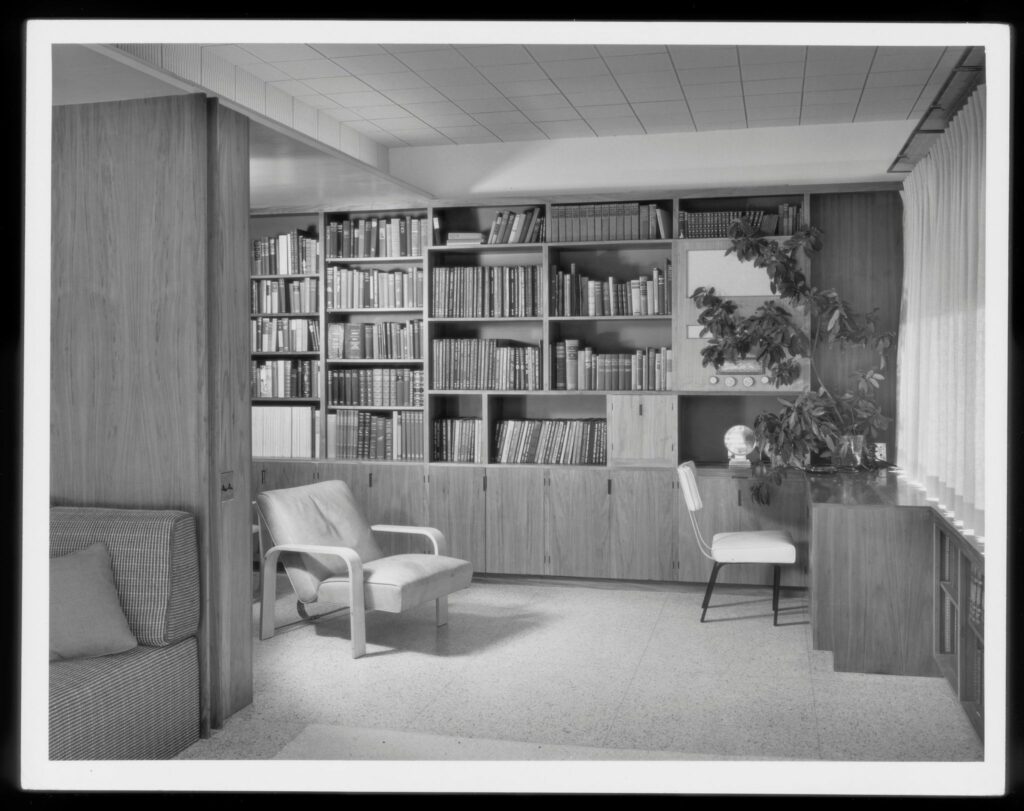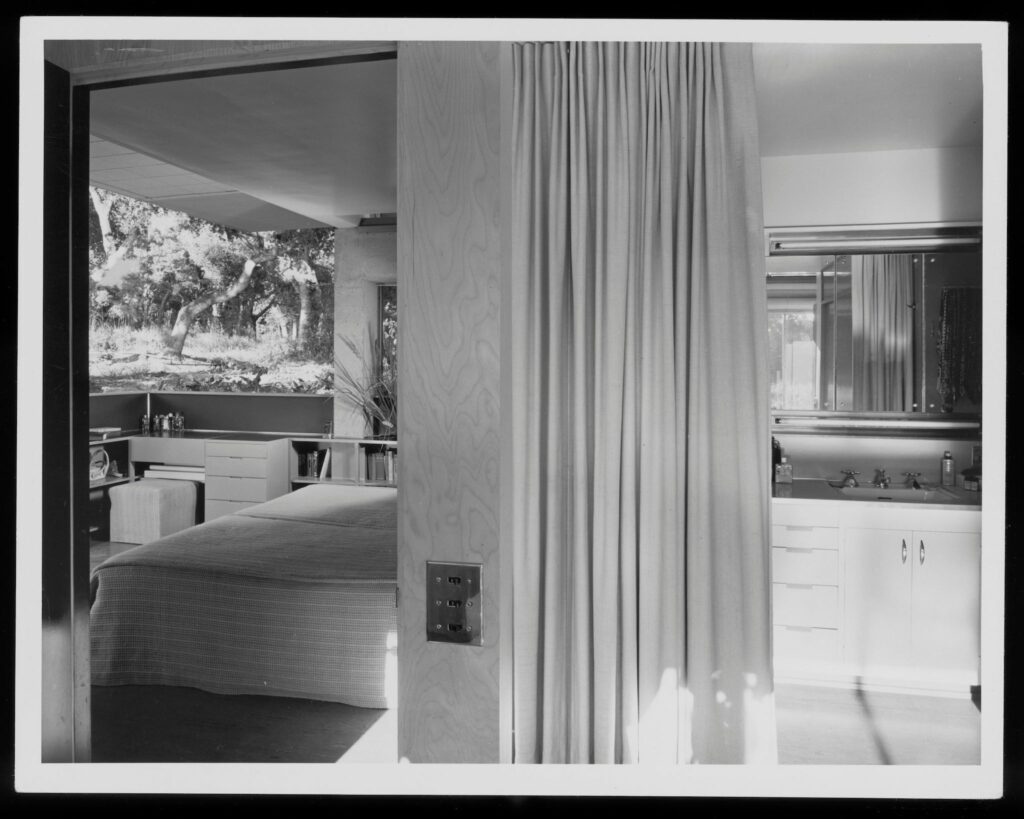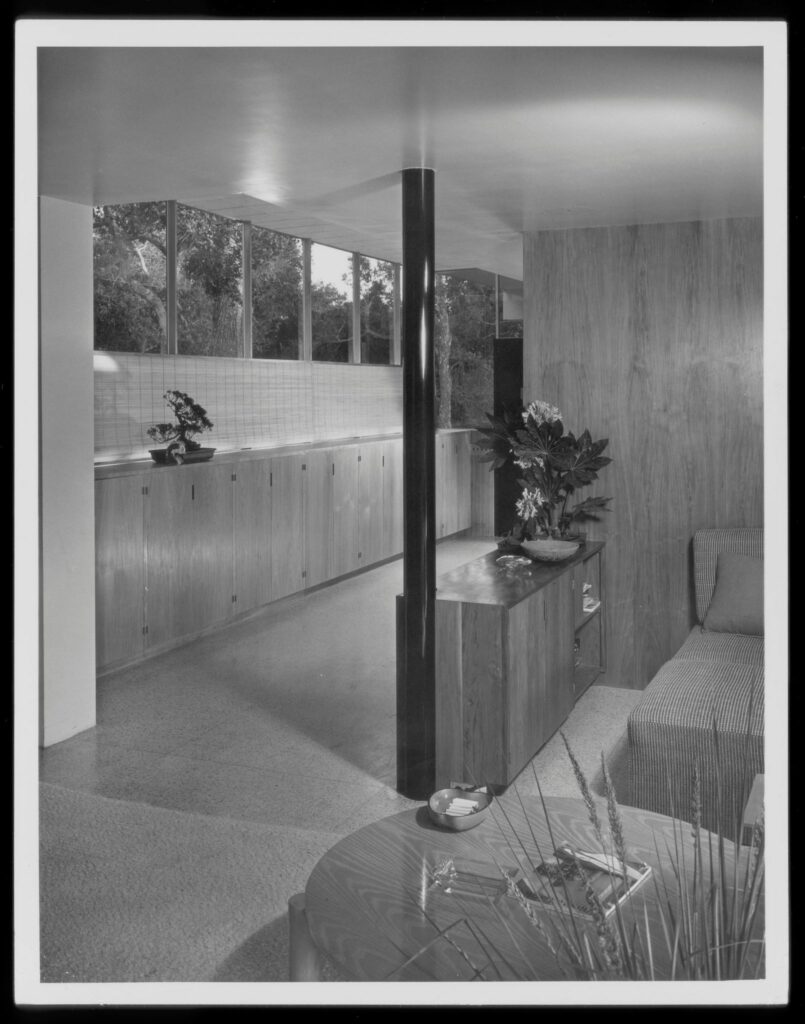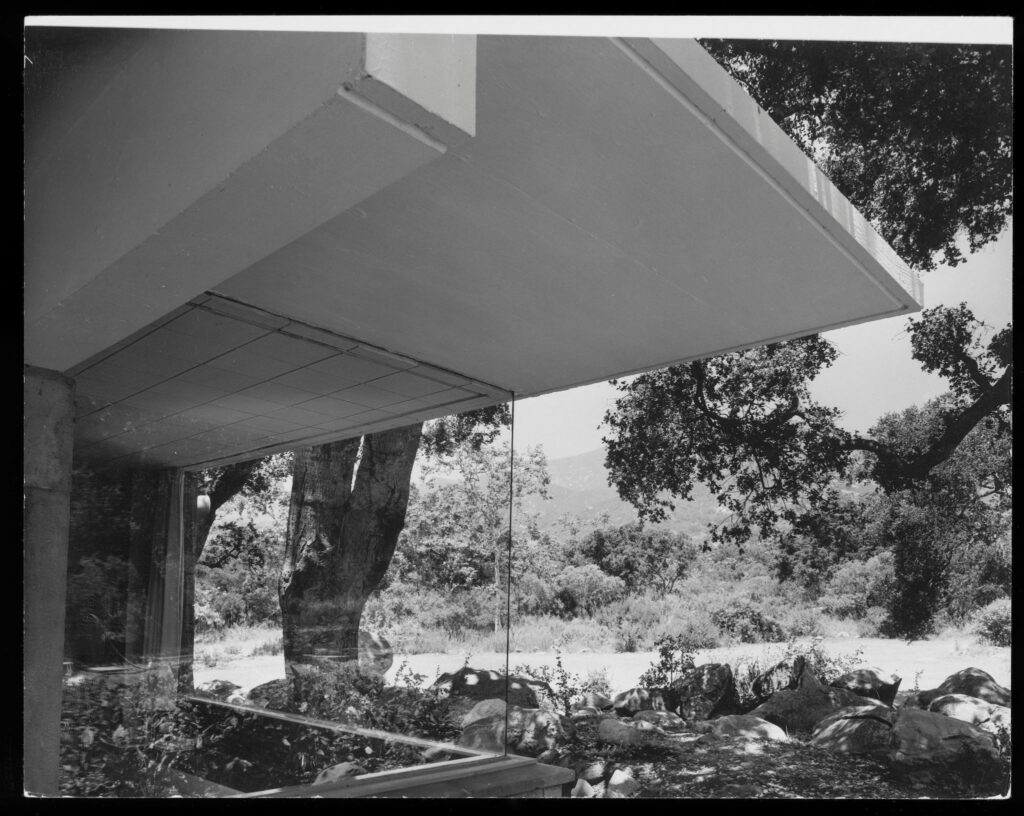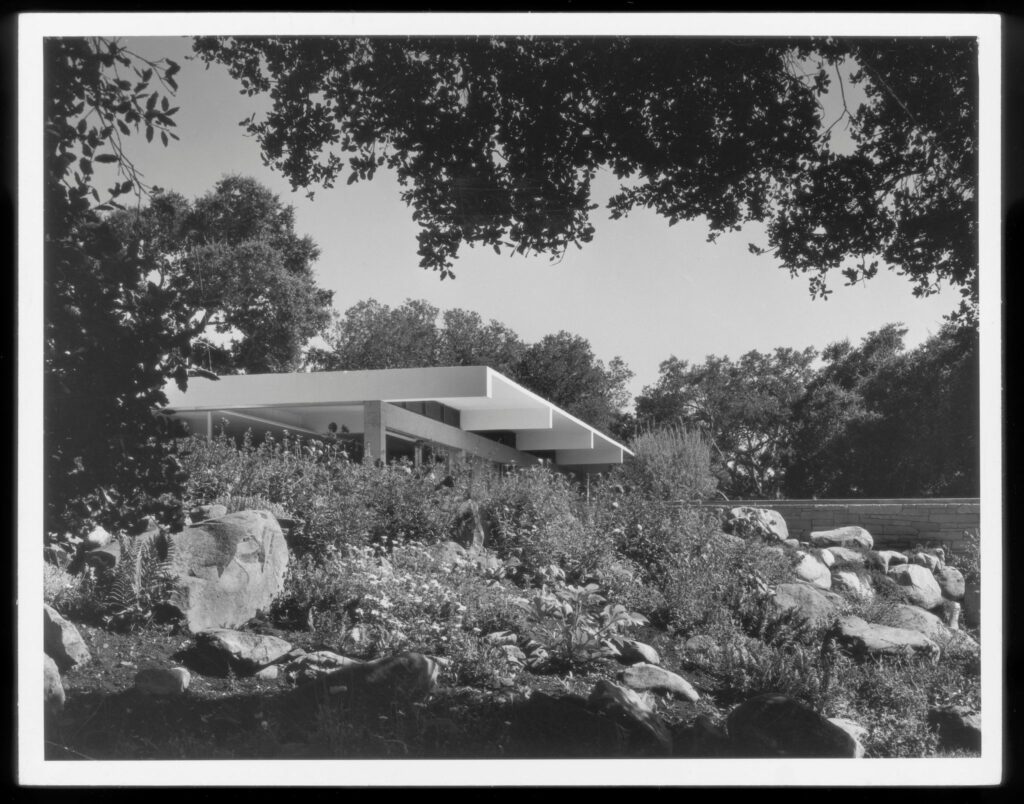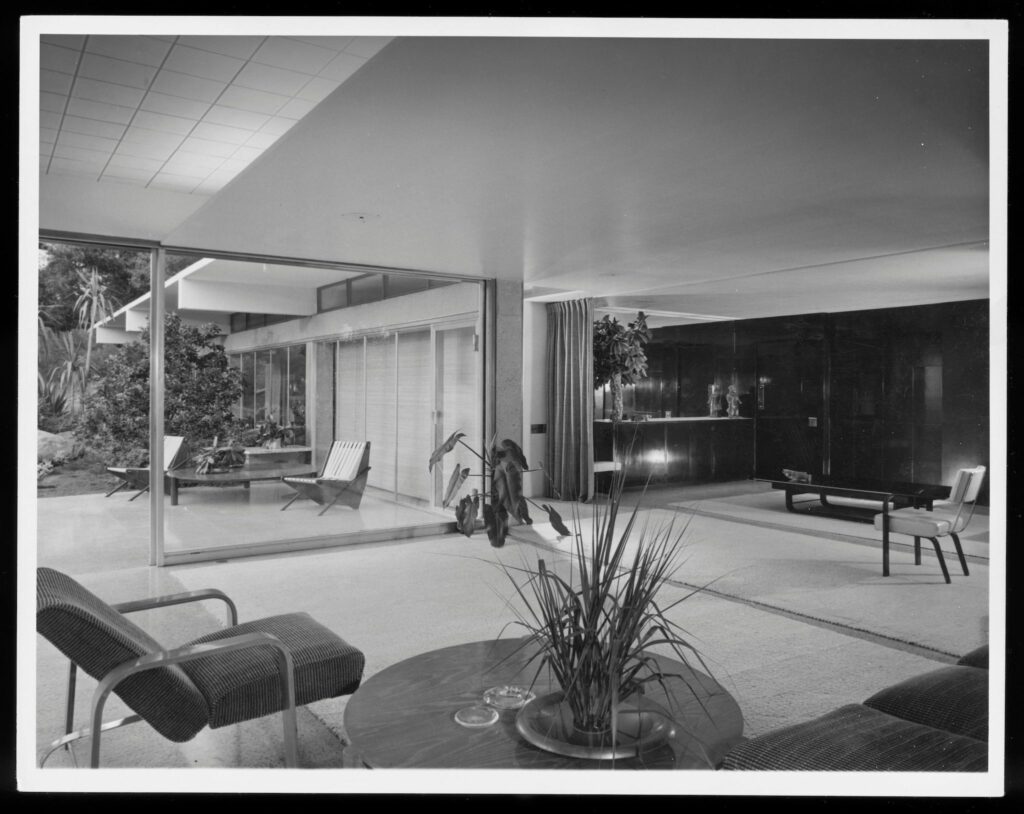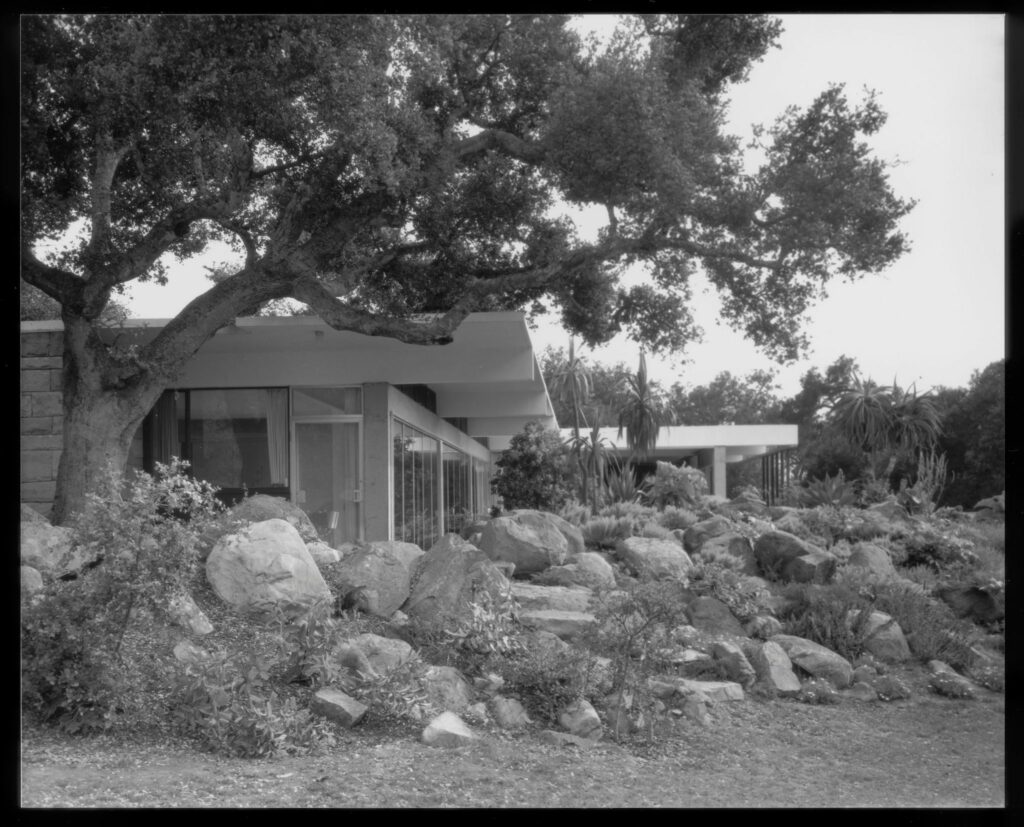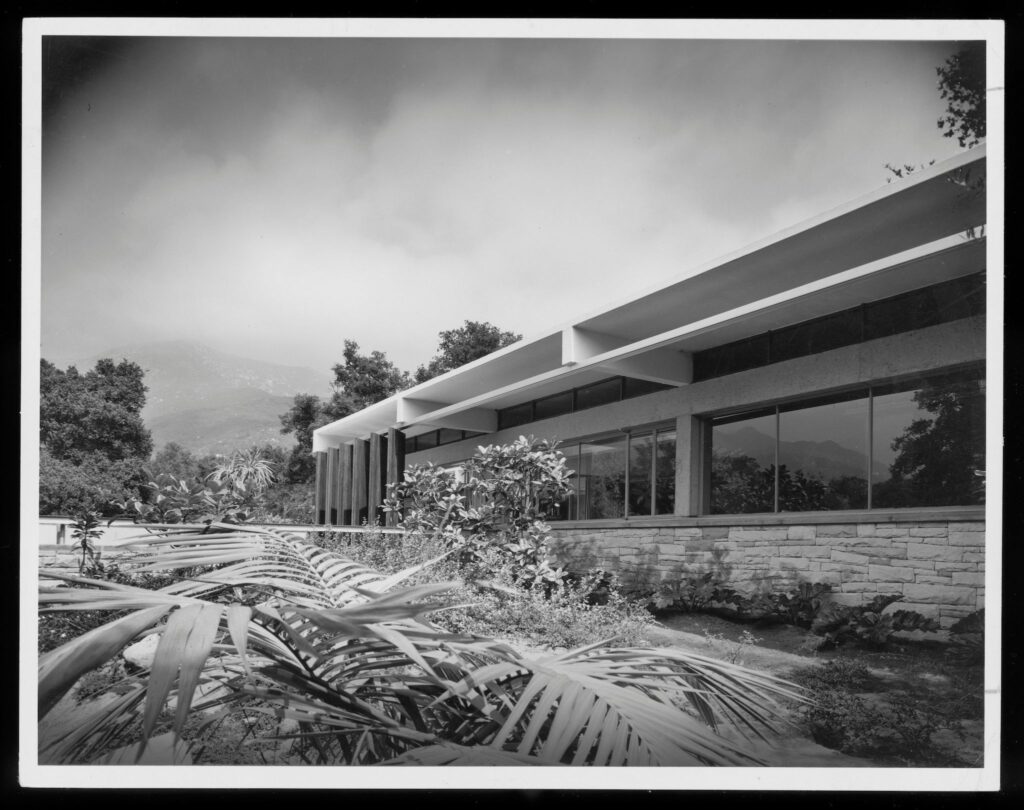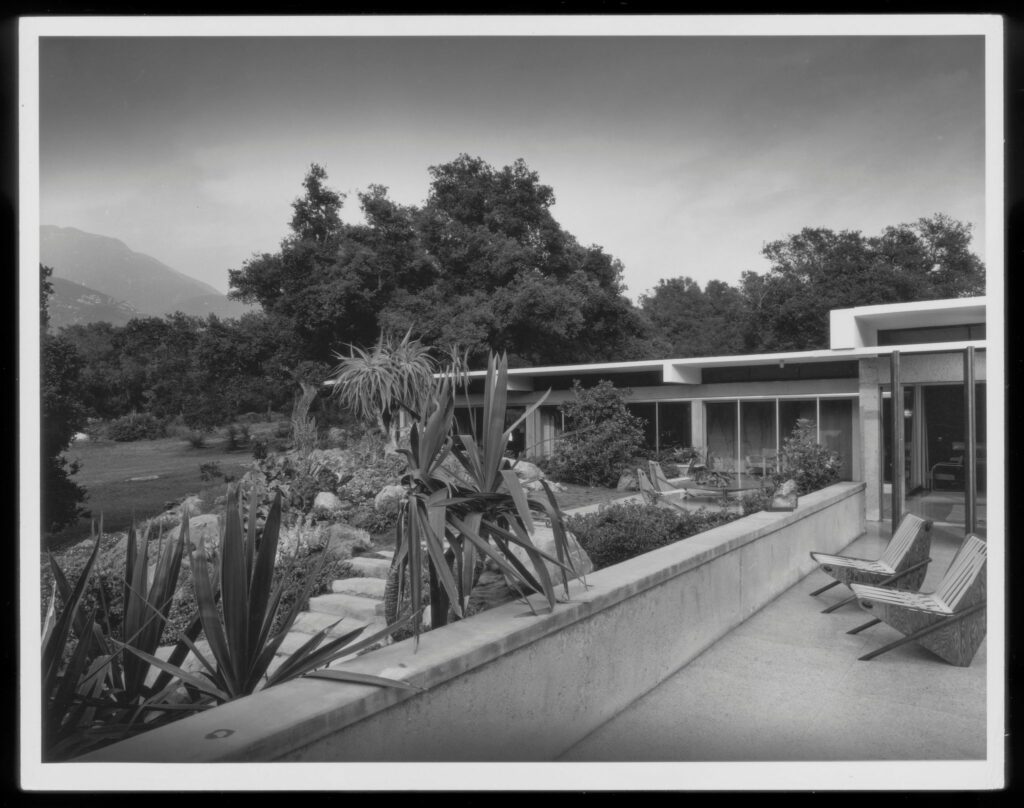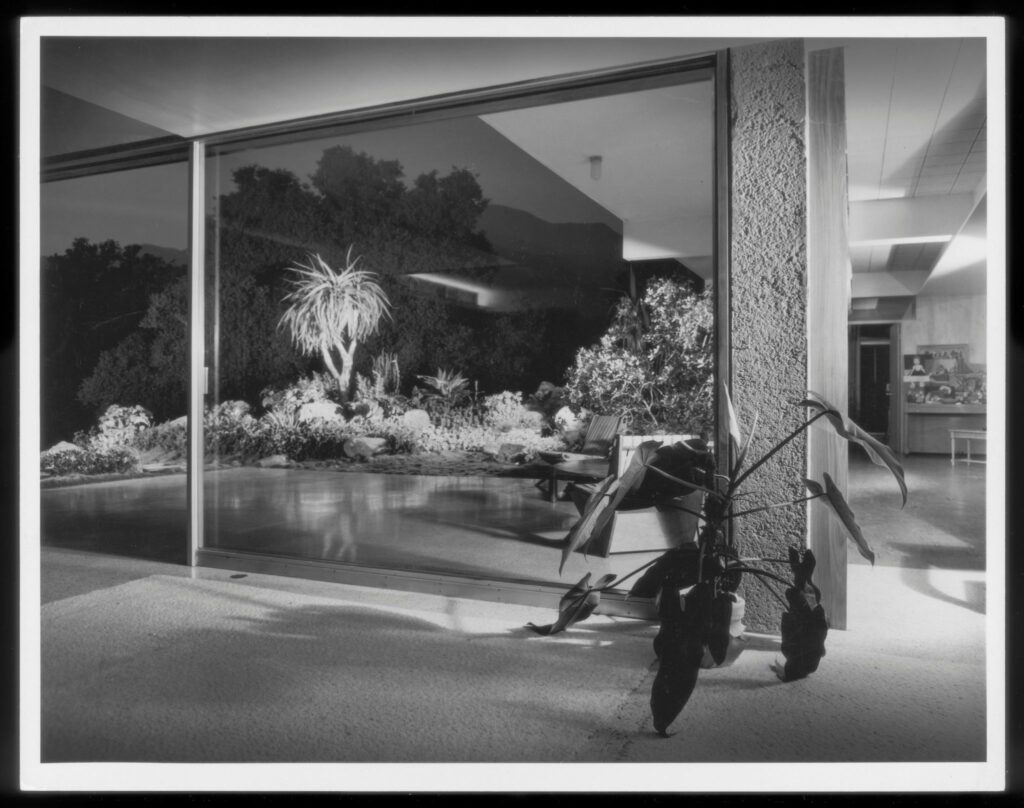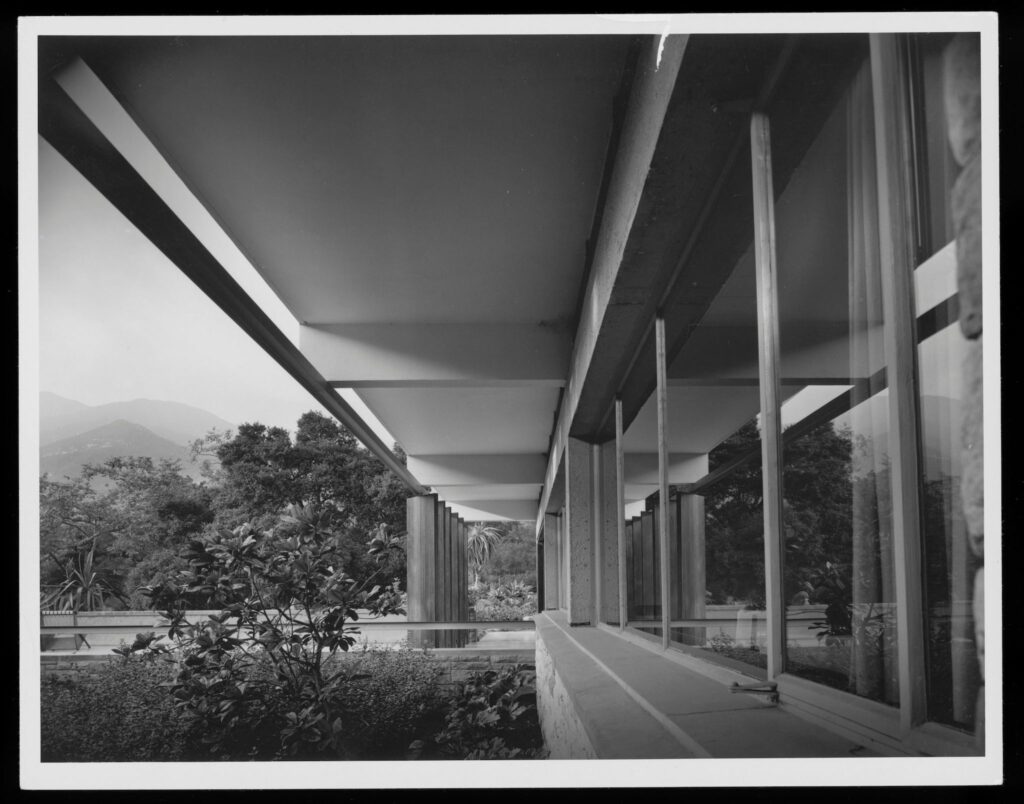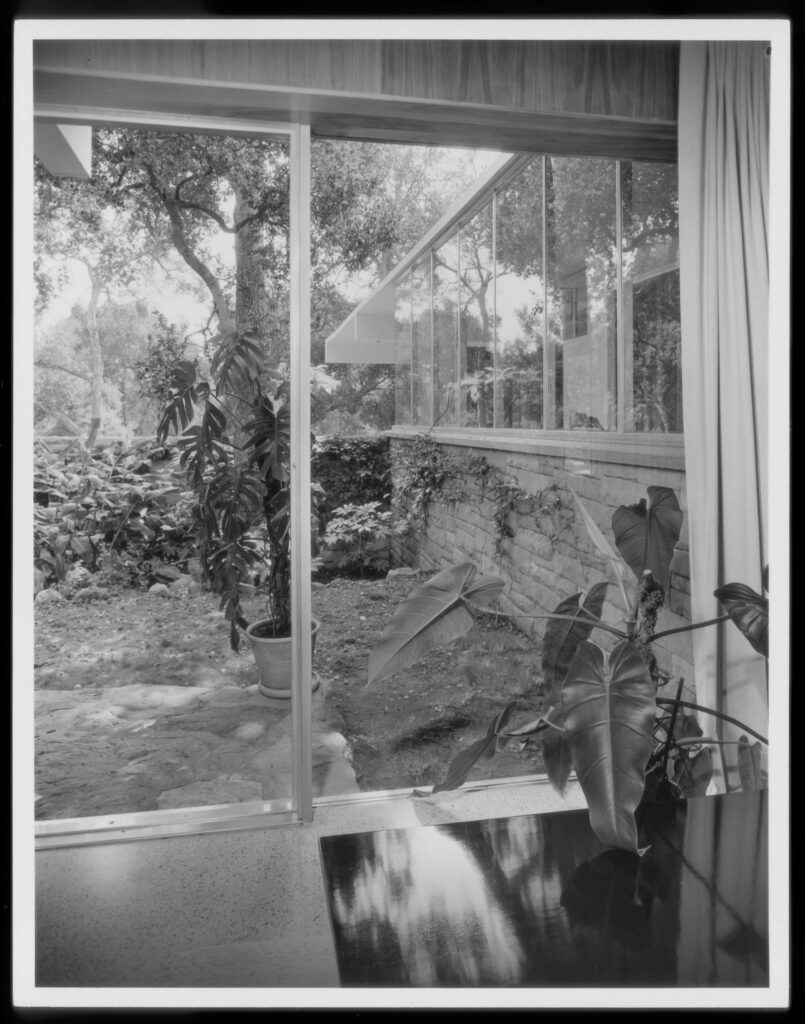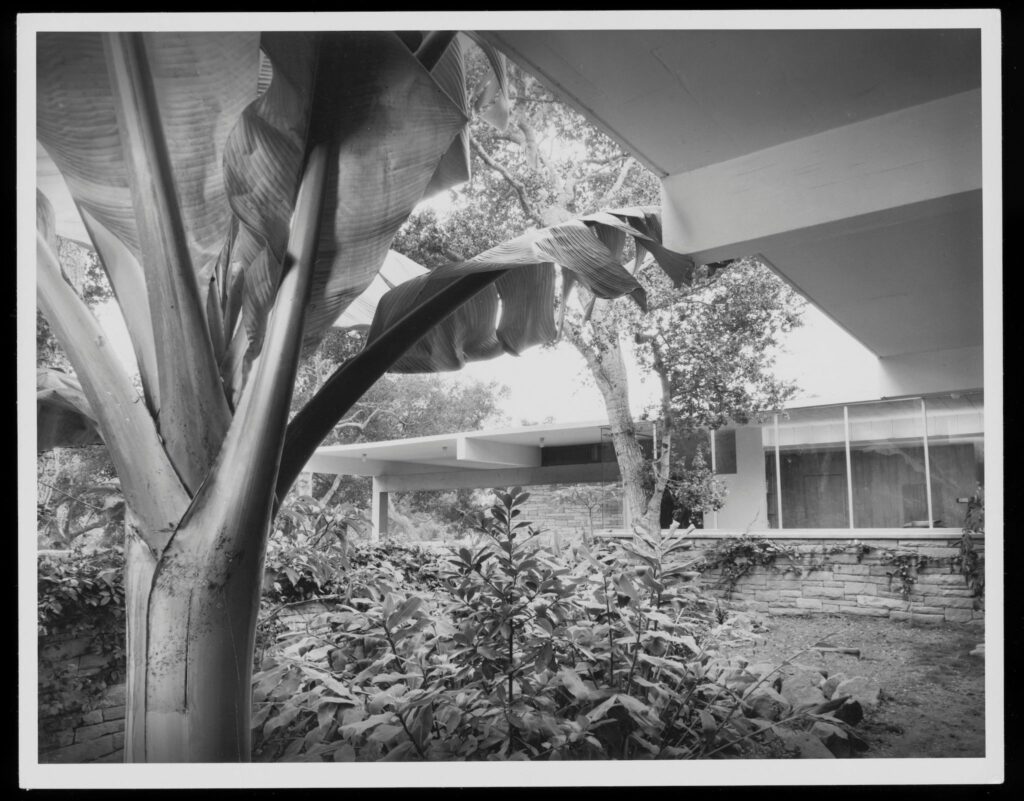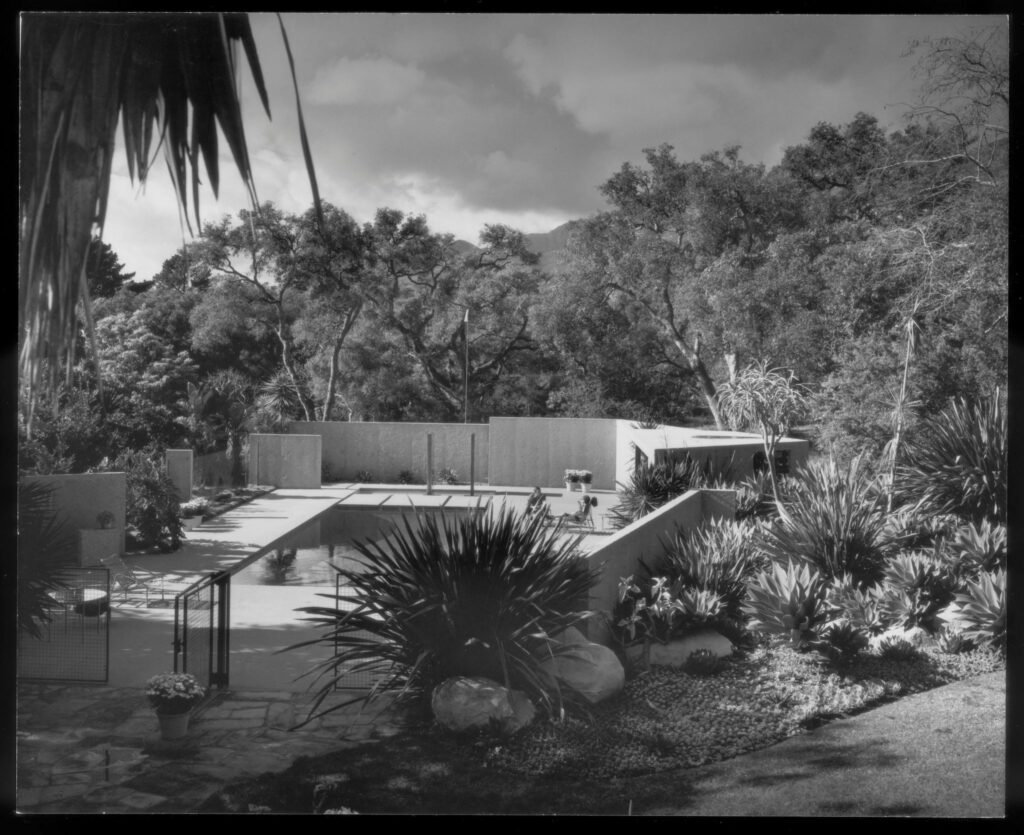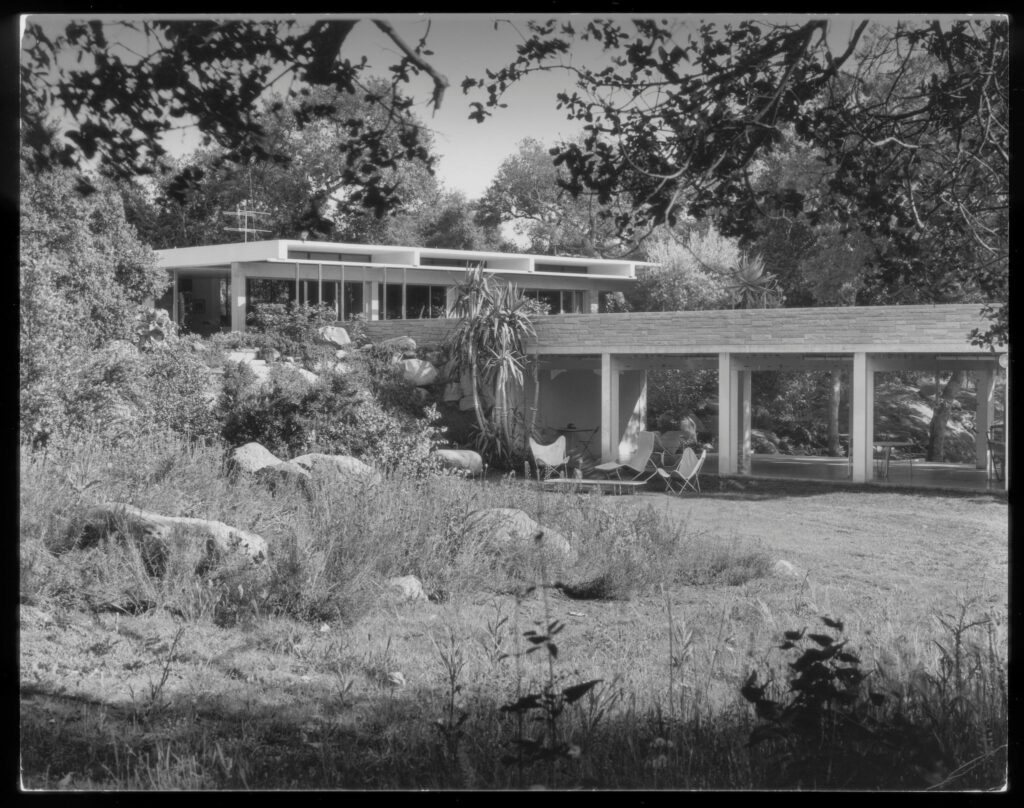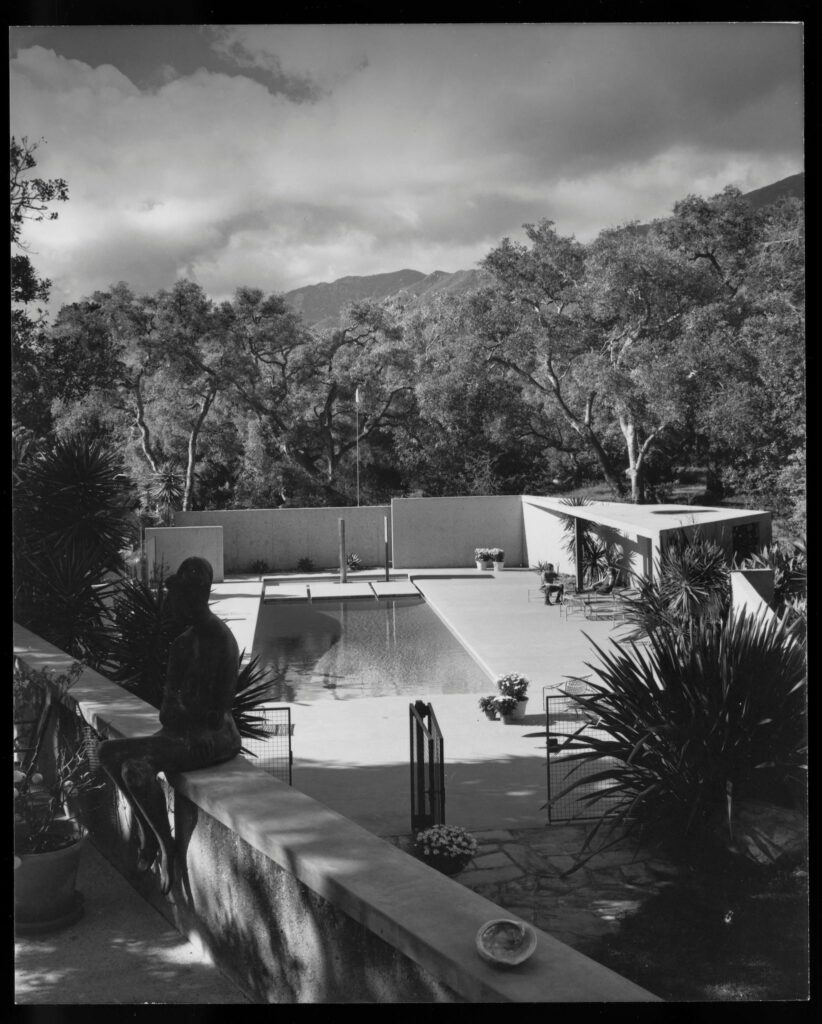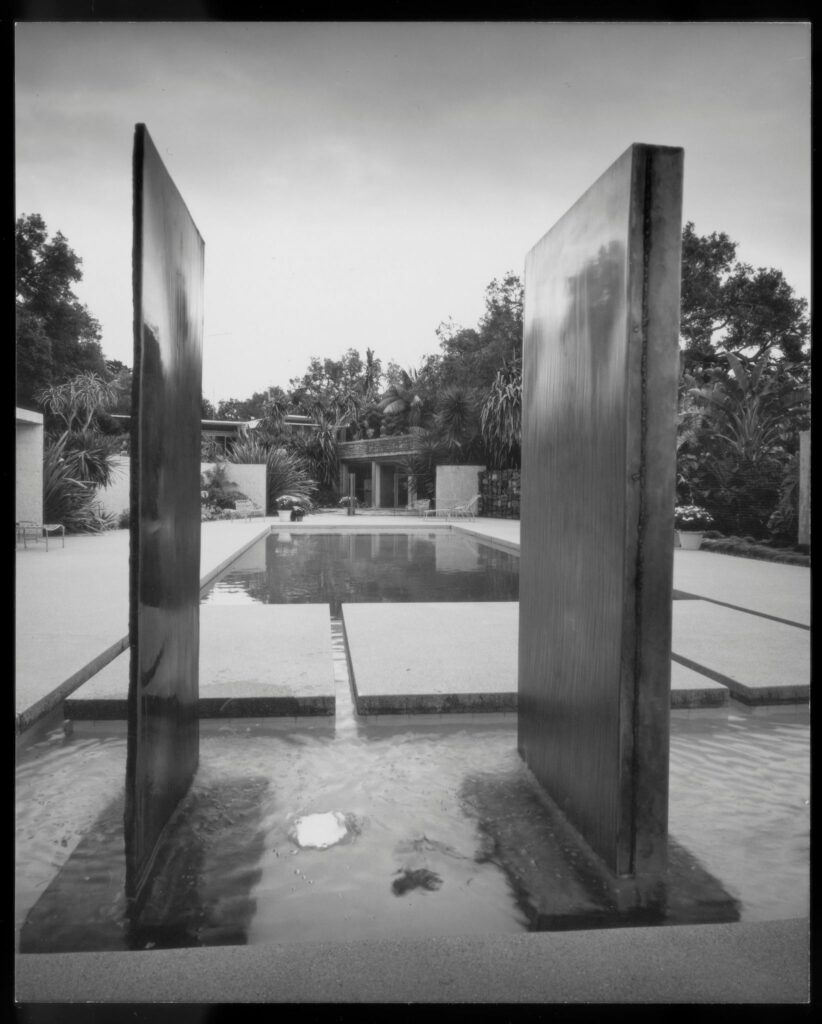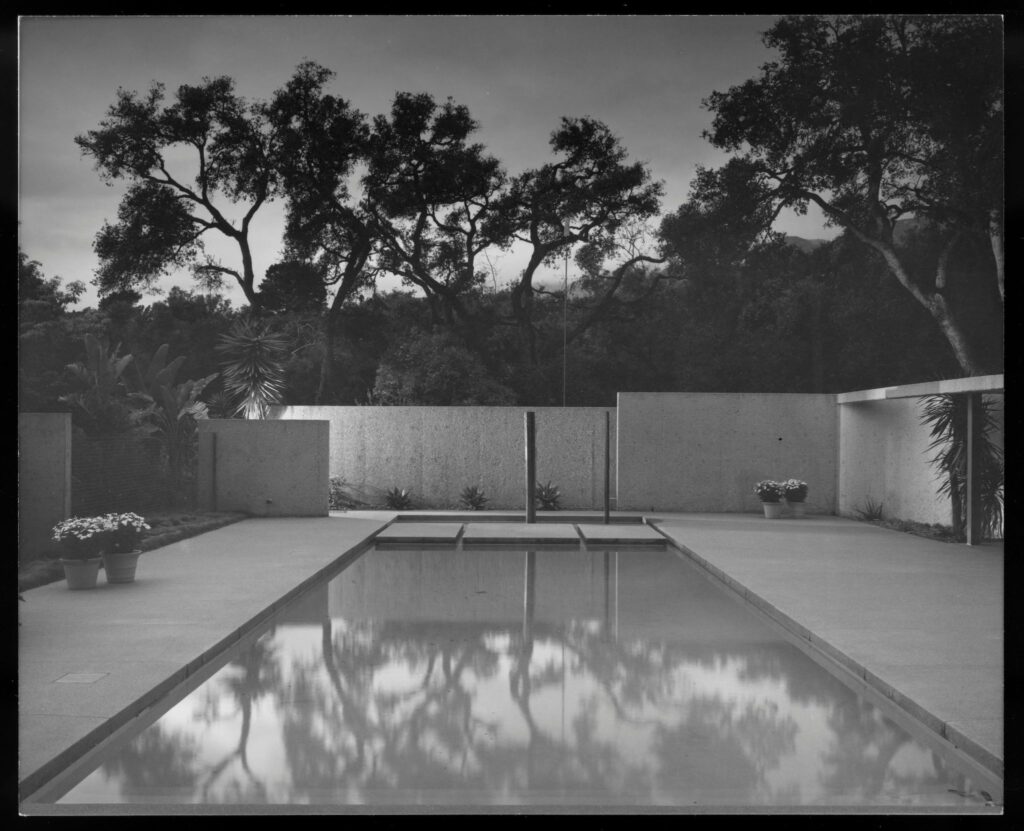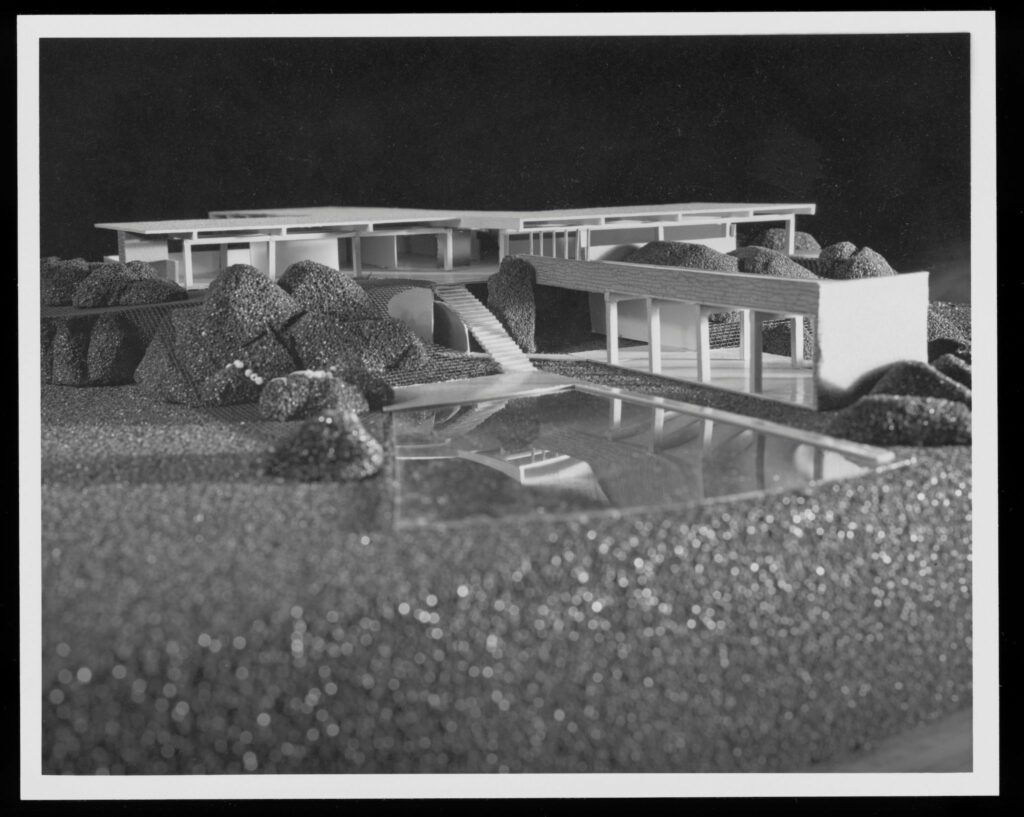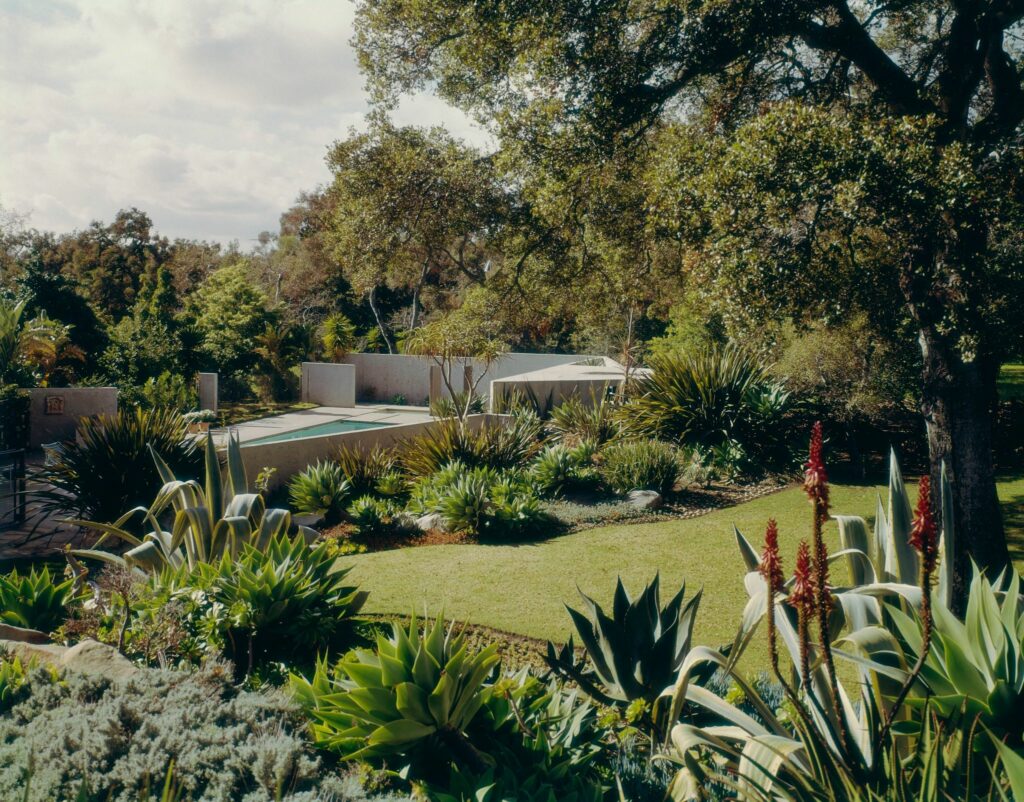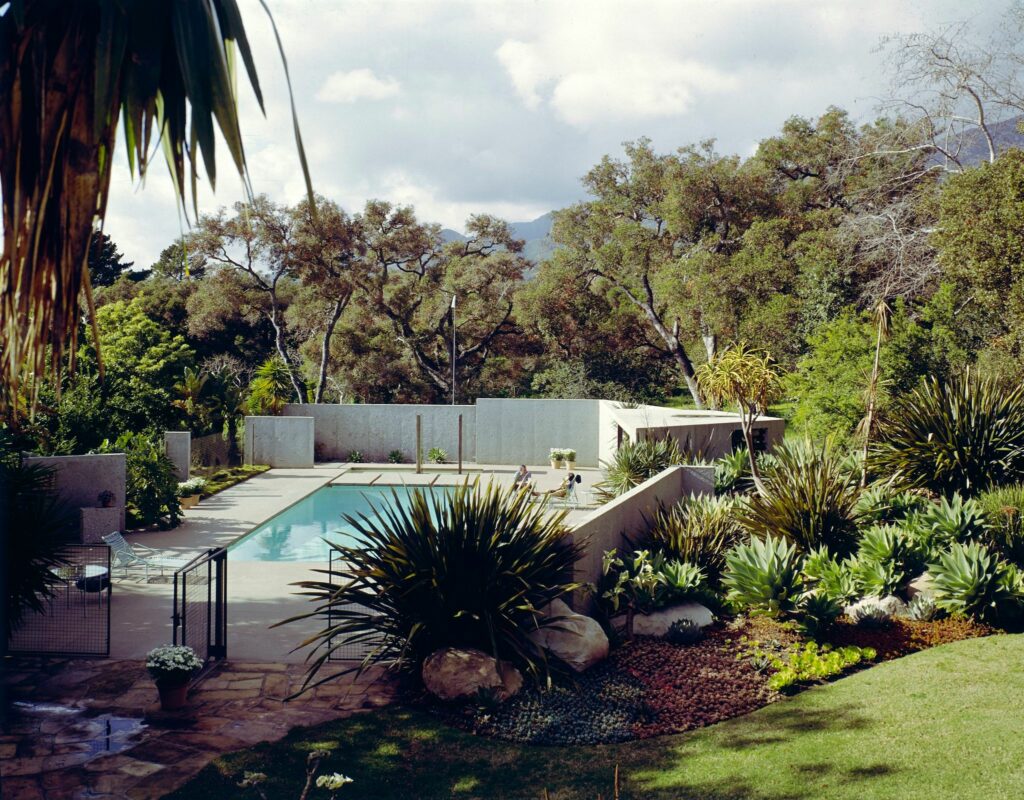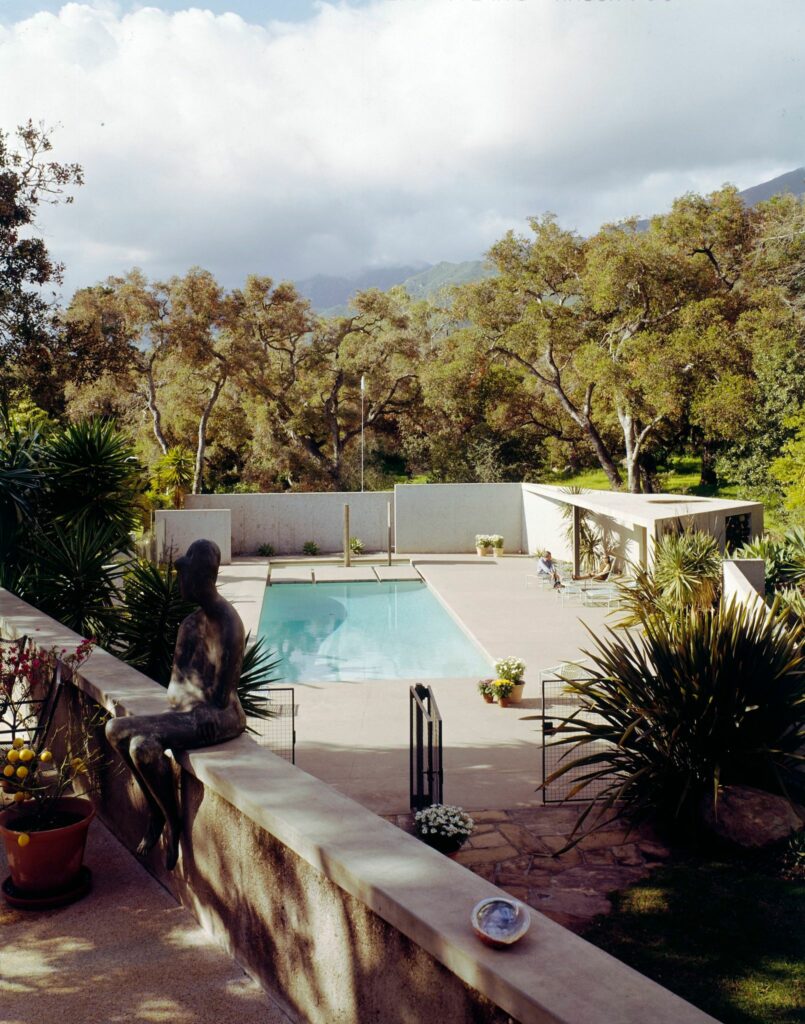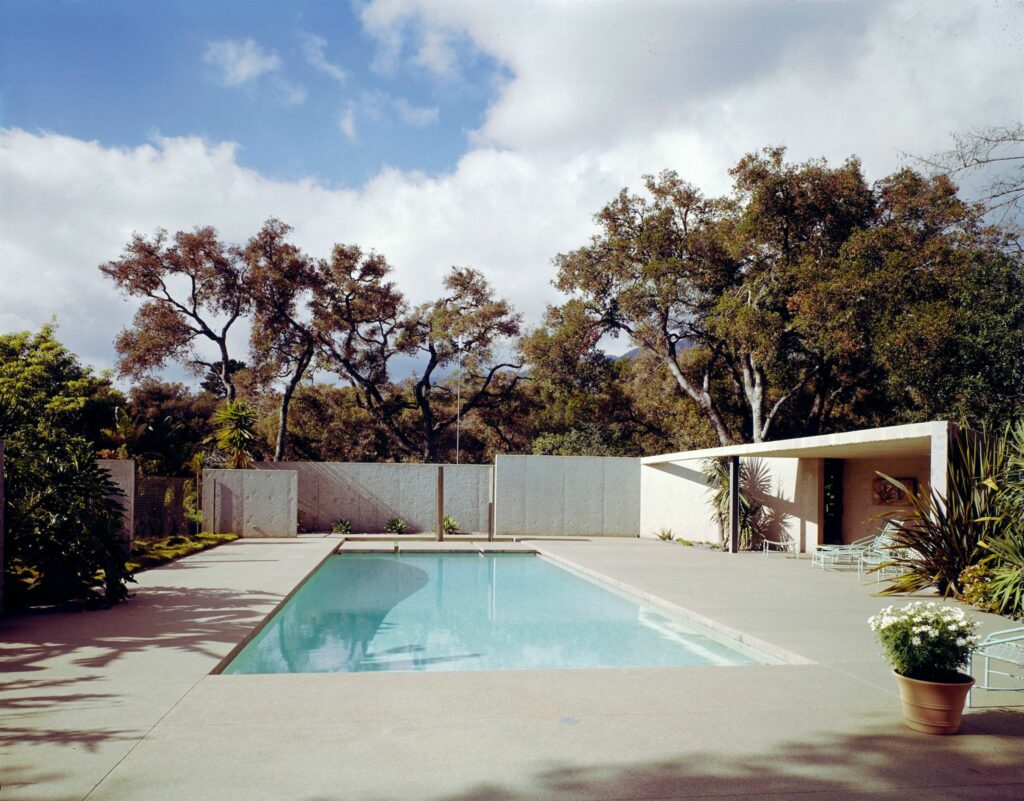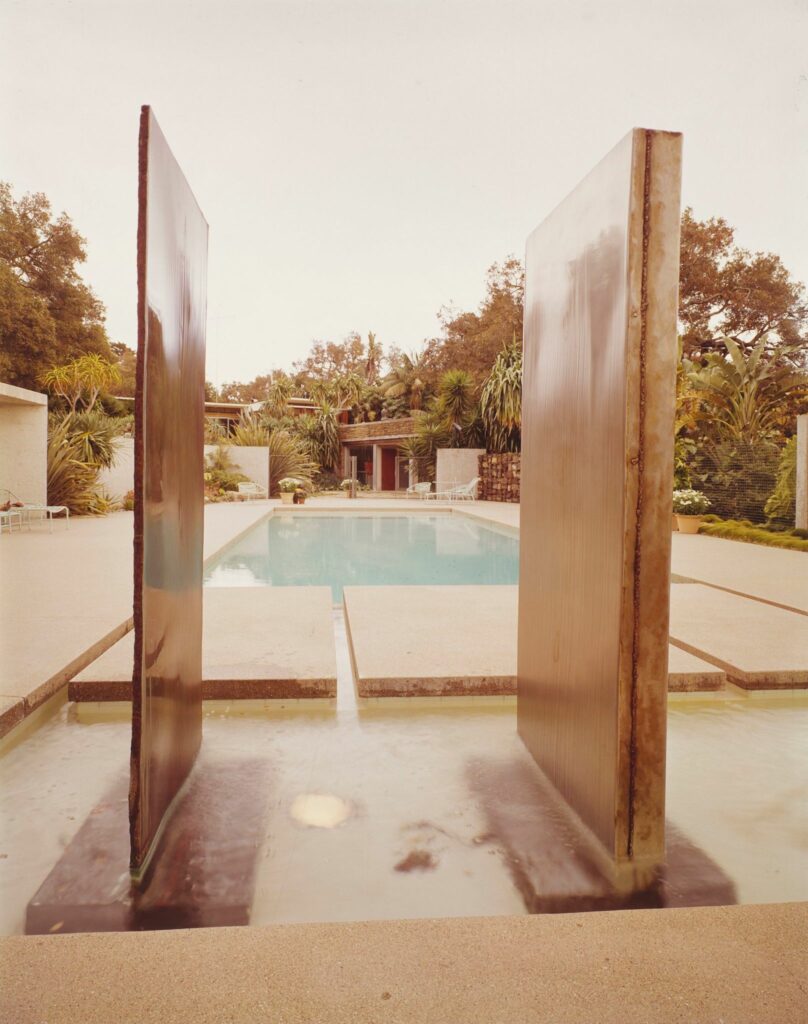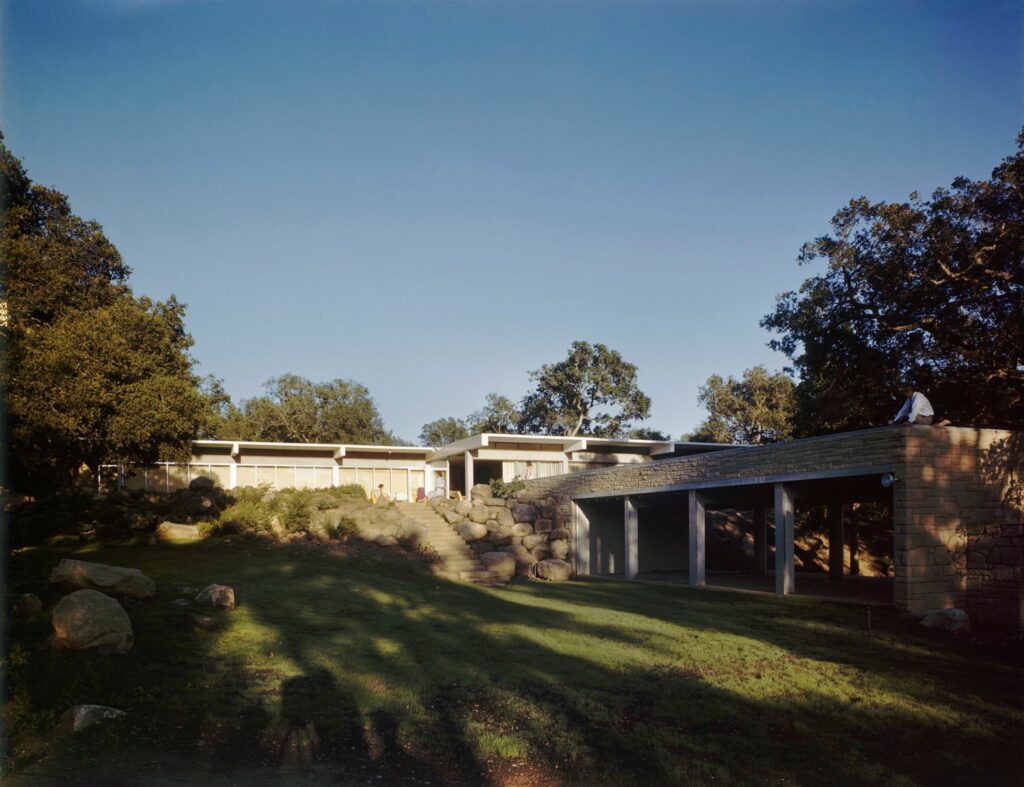Mr. Warren and Mrs. Katharine Tremaine House
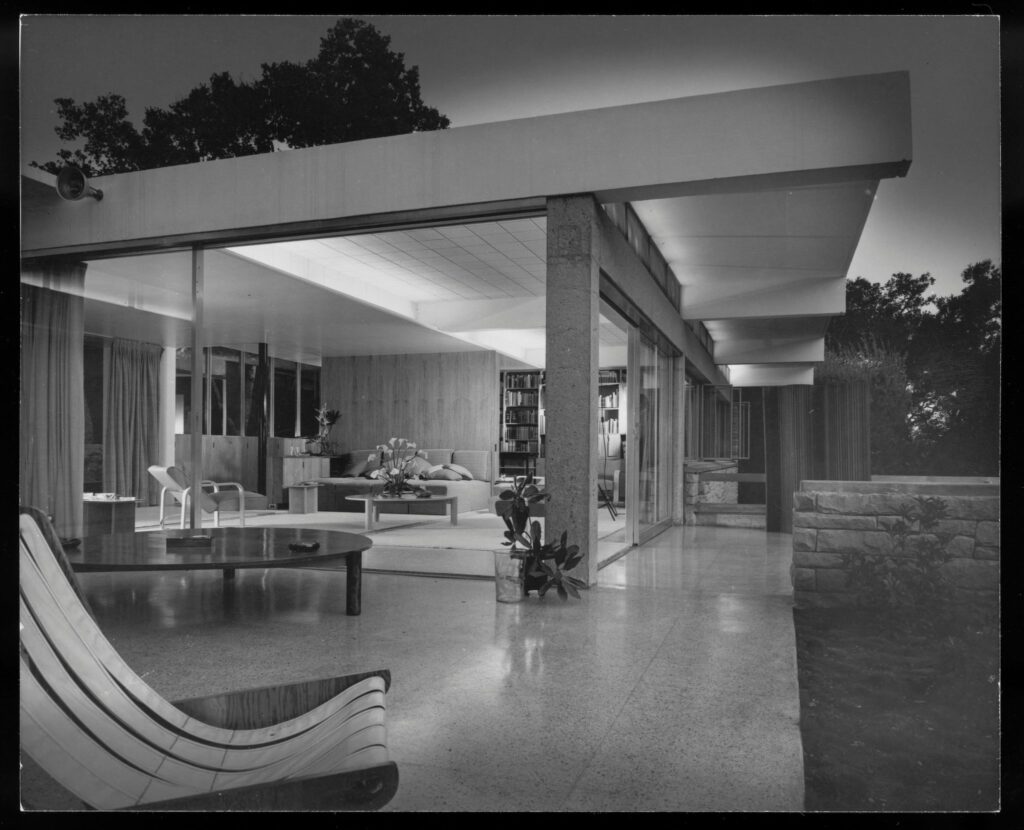
Mr. Warren and Mrs. Katharine Tremaine House
To reach the Tremaine’s house in Montecito, one travels curving roads up from the ocean below then turns down a small road sheltered by California oak trees. Amidst this ancient grove of oak, which is broken by monumental stone boulders, the house hovers above Santa Barbara and the Pacific Ocean. Richard Neutra derived great inspiration from the site which he wrote about in Mystery and Realities of the Site. In his design for the house, Neutra invokes the site’s mysterious aura with contrasting elements, establishing a tension between floating and anchored spaces, opaque and translucent divides, and machine-made and natural materials.
Neutra integrates his aesthetic gestures with the structural system that supports them. For example, a roof slab that appears to be impossibly thin is cantilevered above beams which are reinforced by long frontal girders and, in turn, concrete pillars. Avoiding structural redundancy, a mark of his experience as an architect, Neutra designed the concrete system to minimize the use of load-bearing columns and beams and increasing their spacing as a result. When an inconveniently placed column became a necessity, as one was in the southeastern corner of the living room, Neutra replaced the concrete pilar with a stainless-steel clad column which would not stop the eye and divide the space. In this way, the elegant design is also a practical one; concrete is used to diminish the risk posed by forest fires and a continuous ventilation system resembles Neutra’s theoretical Diatom IV House of 1923 and his Puerto Rico classrooms of 1944. In fact, no plaster appears in the house; a rough native stone is used for the walls, which contrasts in both color and texture with the white beams and roof slabs.
The house has a pinwheel-shape plan, recalling Neutra’s design for the Kaufmann house, but for this house, Neutra extended the east and west arms so that they are much longer. Despite these extensions, the Tremaine house is much more compact and centralized than the Kaufmann house. Unlike the Kaufmann house, which was built for a couple, the Tremaine house was designed for a family with three children. Stone walls shaping the patio and guest wing greet visitors as they arrive. Inside, spaces are fluidly connected with one another with extensive glass or wood sliding partitions, which can be opened to redefine spaces and their uses. This adaptability is also evident in fixtures such as the dining table which can be lowered to the height of a coffee table and the portholes to the pantry which can be closed. Below the house, an art gallery opens onto a garden with trees and a meadow. The gallery’s cantilevered roof extends eight feet, further connecting the spaces. The private quarters are carefully designed as well, including the master bedroom where the windowsill intersects with the ground plane, bringing nature indoors.
Neutra carefully considered interior fixtures, designing much of the furniture, such as a set of unusual ash and leather sided armchairs, and other décor, including every rug, drape, and bedspread in the house. His planning accounted for details ranging from the color, the fabric, and even the yardage required. Other items, purchased off the shelf, such as copper porch furniture, were customized to suit the space. Despite the extreme control he evidenced over the design, Neuta wanted to ensure the Tremaines felt at home in the space.
Adapted from Neutra – Complete Works by Barbara Lamprecht (Taschen, 2000), p. 200.
Project Detail
Year Built
1947–48
Project Architect
Richard Neutra
Client
Mr. Warren and Mrs. Katharine Tremaine
Location
Montecito, CA
